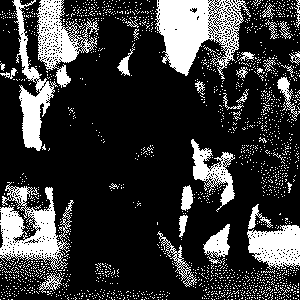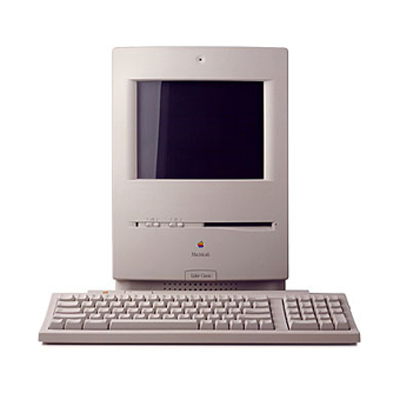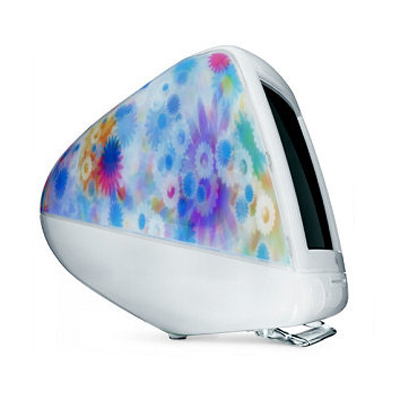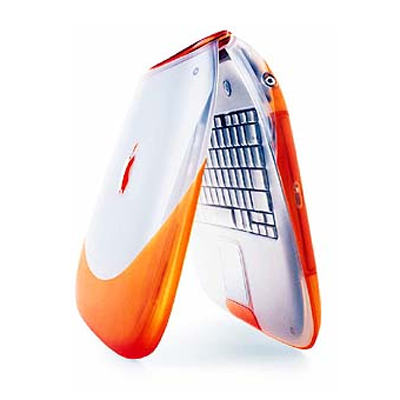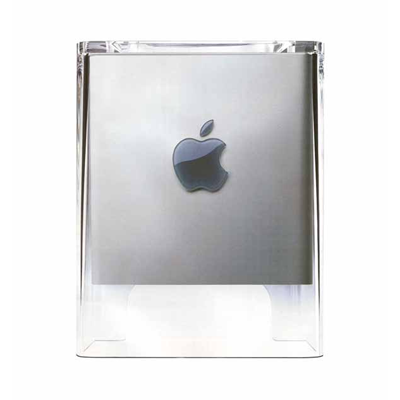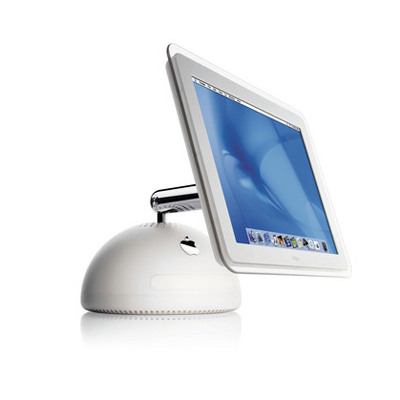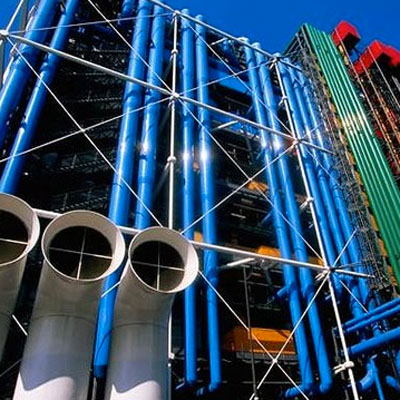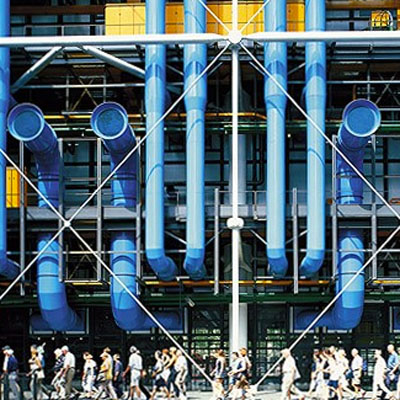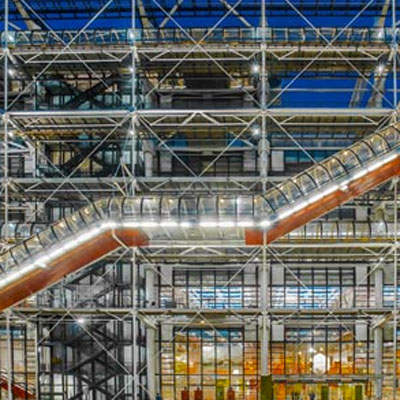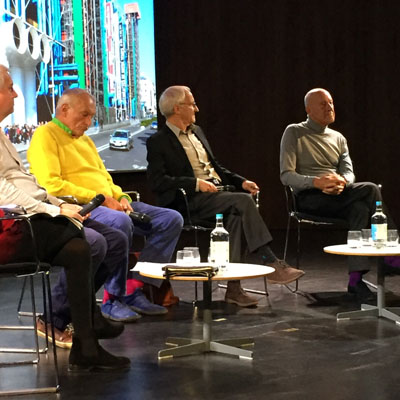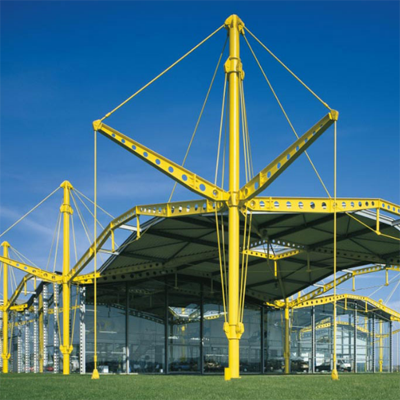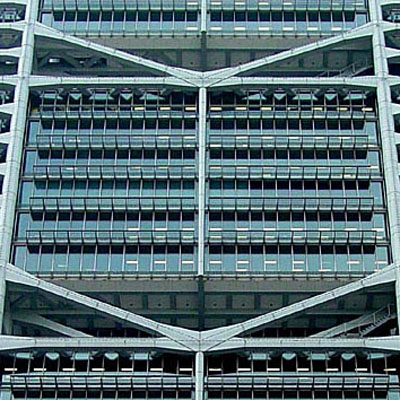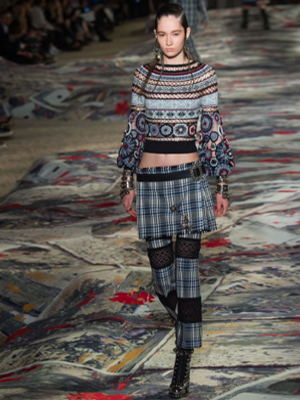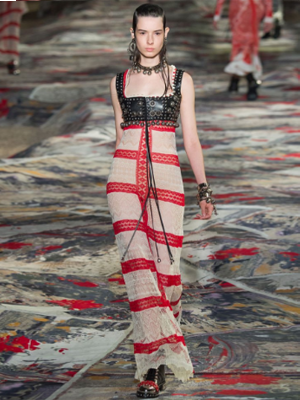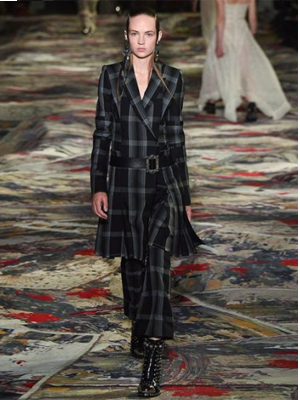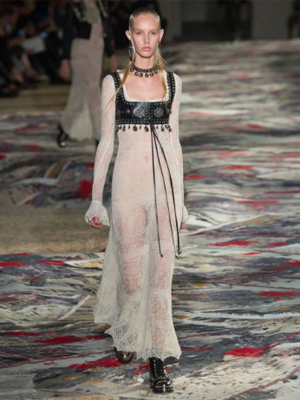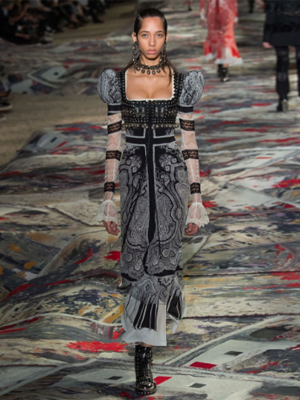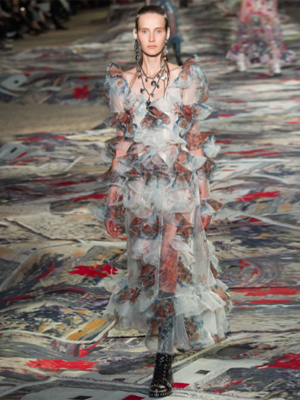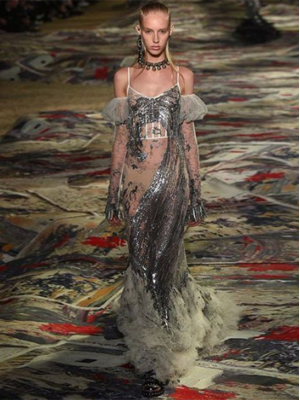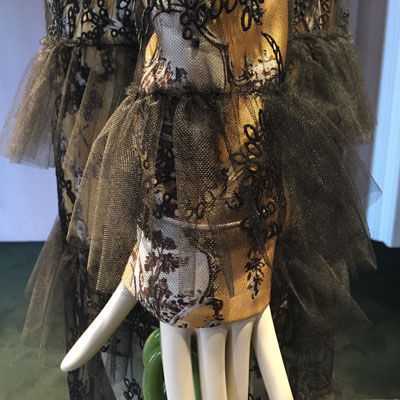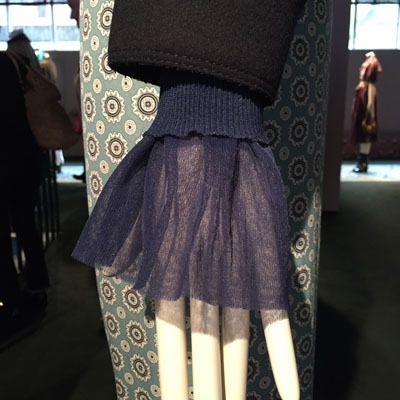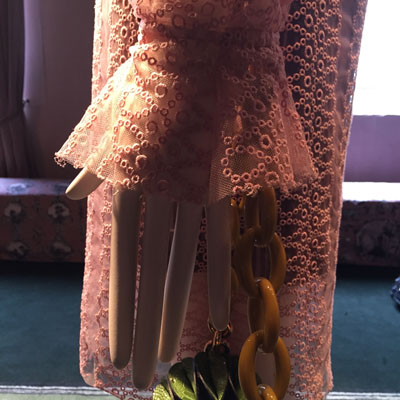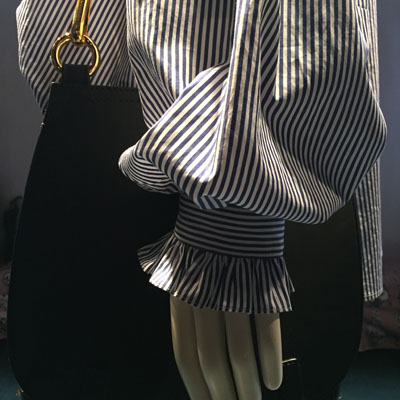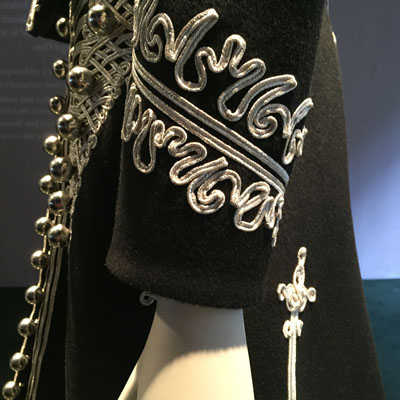271216 – Distance – London WC2
> words
We are off to visit the Caravaggio exhibition for a second time. As we turn the corner to approach Trafalgar Square from the west the low winter sun hits the National Gallery hard on its face; the lights beauty stops us in our tracks. The low sun brought relief to the moldings and cornices, adding definition, warming the yellow Portland stone whilst articulating all of the details of William Wilkins façade. It was a rare opportunity to fully appreciate a London building so often hidden by English overcast skies. Ruskin’s Seven Lamps promptly came to mind, Venice at sunrise or sunlit cobbles in a sleepy Italian hill town….but then there was a pause as I said that light had travelled 149 million miles to hit that façade. We Googled the travel time, light travelling at 186 thousand miles a second took eight minutes to travel from the sun to the National Gallery.
It is difficult to comprehend space speed and distance, 149 million miles in eight minutes, 18.6 million miles a minute. We understand space-time only from speeds that we regularly experience, long distances are most frequently experienced through car travel and this forms our all-encompassing concept of scale. At 60 mph, a mile a minute, quite fast and a legal speed, London to Bristol, 120 miles is 2 hours, London to Manchester, 210 miles is 3.5 hours. If we had lived in the 18th Century our all-encompassing concept of scale would be the horse and carriage with a speed of approximately 6 mph, London to Bristol 20 hours, London to Manchester 35 hours. Our experiential conditioning of space-time prevents us from fully comprehending our insignificance within the universe.
A light year, the distance light travels in a year, is six trillion miles, again a meaningless number, even more incomprehensible when written 6,000,000,000,000 miles. Our VW Golf is happy at 60 mph. one light year at VW Golf speed is 100,000,000,000 hours or 47,915,668 years. So in our VW Golf, assuming we would need a couple of sandwich breaks it would take 48 million years to travel one light year. The nearest star to the sun is Alpha Centauri 4.4 light years from earth, the Golf’s not up to it.
There are approximately 300 billion stars in the Milky Way, if, assuming 10% of them have planets, there are 30 billion planets in our galaxy alone and there are over 100 billion known galaxies in the observable universe. Our concept of space-time is so wonderfully inadequate and our present ability to cross such distances is so far out of our reach that it will be some time before we can ”boldly go”.
If Einstein’s Theory of Special Relativity is correct and that energy and mass are interchangeable, speed of light travel is impossible for material objects that weigh more than photons. The energy needed to move a material object at the speed of a massless photon moves to an infinite requirement as it approaches the speed of light. Warping space to move an object instead of increasing its kinetic energy is a purely theoretical solution to the problem although one adopted by many science fiction writers. Star Treks warp drive is a scalable measure using the formula v=w3c where v is velocity, c the speed of light, and w the warp factor. Therefore warp factor 1 is the speed of light, warp factor 2 is eight times the speed of light (23) and warp factor 3 is twenty-seven times the speed of light (33). Warp factor 10 theoretically reverses time.
Discovering the means by which to cross such colossal distances will be the equivalent to the wake up that followed the Hellenistic astrologers proof that the world is spherical and not flat. (The world as a sphere was conceived by the Greeks in the 6th century BC and proven in the 3rd century BC). Until we are able to cross such immense space-time distance our only interplanetary explorers will be Hollywood movie stars, the occasional Vulcan and of course the suns photons.
Images 1-7. The National Gallery at Sunrise. 7 Robert Venturi’s Post Modernist Trace.
The Surrogate Twin
251216 – Xmas Reflections – London
> words
Christmas is so many things to so many people, to some a religious festival or a winter ski holiday, to others blatant marketing and commercialisation. I have a very neutral opinion in that it just exists like every other calendar event that has little meaning or relevance to my life. I neither dislike or like it, as a period of reflection and reassessment of ones values it is worthy interlude from the relentless business world. As such I have little to comment on Xmas so instead have included a link to an FT article that better explains the magic that makes some people so wonderful. The ability to see is a rare gift, here in this article, when some see humble fairy lights others see progress, cosmopolitanism, ecosystems and opportunities.
Happy Xmas John Gapper
231216 – Abstract Expressionism – Royal Academy, London W1J
> words
1946 with the World Wars over, Europe is on its knees, derelict and destitute, it fights for its own survival as it struggles to return back to normality. The mending journey would take 15-20 years, Europe then financially crippled, with a bombed out infrastructure, a severely diminished labour force and left with enormous US debt. America did well out of the wars, it found its second wind and with it grew to dominate world Industry and finance, oil and resources, media and politics and with this the world became more American. Excess was the consequence of this new found wealth, glamour shifts from Paris to 1950’s Hollywood, big dresses, 6m long cars, palace sized houses with full fridges the size of a British terrace house box room. America is a country confident in its newfound strength, it is brash, forward looking and opportunistic. Old world order is finally smashed, improvisation and experimentation is the order of the day, New York Jazz, Cigarettes, Beatniks and Abstract Expressionism. Coltrane, Kerouac and Pollock.
Spontaneous, subconscious, automatic art put New York at the centre of the 1940s and 1950’s contemporary art scene. The canvas, a space of enactment, an event captured and contained, where paint is liberated from the values of morality, politics and opinions. The studio floor replaces the easel, paint is dripped and splashed without traditional brushstrokes and all of their tonal values, the unstretched canvas is attacked from all sides. The very changes of approach and production influenced numerous painters for the following decades freeing up techniques and attitudes. Post War, when all progress that had preceded the wars led to catastrophe, new directions were unclear and could no longer be philosophically prescribed, experimentation was the only way forward.
Colours are players, sax and drums, swish, jab, scrape and slide, feel don’t think, move when it moves, beat and scale, adlib, react, follow its lead, let the conversation begin. Blue wipe shrill African forms, mud and primitive, primates on piano, beat the poet, open up within, express and distress, emotive control, follow the senses not the mind, staccato on a drip drip solo. Bohemian hedonists take their Naked Lunch, On The Road as The Dharma Burns, wave and overlay. “Angelheaded hipsters burning for the ancient heavenly connection to the starry dynamo in the machinery of night” Wet pavements and Greenwich neon, out there man, in the distant basement Howl like Ginsberg where the saxophone screams for those ‘Beat’ down. Build up the layers, colour on colour, a constant progression of an un-choreographed stooping dance. Flick flick and swing “tomorrow is a drag man,” “turn your eyes inside and……..dig the vacuum.”
231216. The Abstract Expressionism collection on display at the Royal Academy was a once in a lifetime opportunity to see so many influential works together in one extensive exhibition. The work on display is of the most influential of the period, it is simply incredible, the show, sadly is not. The RA has long been a dusty old backwater forever waiting for a well-needed rejuvenation. Whether this has been due to decrepit internal politics, lack of confidence, vision or simply lack of ability is uncertain. The Abstract Expressionism exhibition is the most undersold show of extraordinary art works ever to be seen. We spent as much time redesigning it room by room as we did looking at the work on display. When one recalls and compares this to recent V&A shows, such as Alexander McQueen-Savage Beauty, the Abstract Expressionism exhibition is a national embarrassment delivered with colloquial intellectual myopia. Everything was wrong, the design, the lighting, the pace, the grammar, the composition, the juxtaposition and the grouping. How can an art based institution put on an international exhibition with such banal mediocrity. Dear RA if you ever have the opportunity to put on such an exhibition again or even if you wish to do a post mortem on this exhibition as it comes to a close please email as you need help and this is not difficult work.
Images left to right. 1-3 Jackson Pollock, 4-5 Willem De Kooning, 6-7 Arshile Gorky.
Further recommended links
The Surrogate Twin
211216 - Electronic Gallery – London c06/1992
> words
Flock Project June 1992.
Invented in 1904 the air curtain is a pragmatic form of invisible non-material boundary. A sheet of energy separates two temperature zones with a fast moving airflow screen preventing the internal and external air pressure from equalising. The air curtain is a primitive form of invisible architecture, a type of force field protecting an interior enclosure.
In the late 1960’s the work of Super Studio montaged an architecture that had been reduced to pure energy, there are no buildings or monuments, no borders or boundaries but instead environs that facilitate and enable life. These were politically conceptual projects conceived for an idealised continuous space, the space of John Lennon’s 1971 Imagine.
Architecture is organised simplistically, usually with serve and servile zones punctuated by service cores that provide for and support programmes. It is possible to organise a more liberal architecture directly from the programme by deconstructing, re-writing and overlapping programmes. Destructed programmes form compositions that are multi-layered like a musical score, the resulting spaces more liquid and transitory. Flock swarming or fish schooling describe types of organised collective motion of numerous individual members that move as a combined whole. This is usually used as a means of defence by magnifying the spatial consequence of the colony. The flock or school move together with equal speed and direction, instantly and collectively responding to events, actions and dangers. The swarm or school is a kinetic spatial organisational system producing a fluctuating architecture appropriate for software driven spatial typologies.
The Light Flute was an initial experimental maquette, it was deliberately shaped like a flute, one end was held and from the other streamed ‘notes’. The ‘notes’ were interchangeable transparencies on stems. Hold the Light Flute to the sun and light through the transparencies modulates the physical space upon which the light falls. The purpose of the Light Flute was not to throw image onto surface, although that was part of its function, but instead to represent the dualism within the concept. When the Light Flute was offered to someone, they would hold it, study it, enquire about its purpose but almost always eventually hold the Light Flute to their mouths and mimic playing. Here without any causal or rational reason an object had directed the behaviour of the user. The Light Flute is an instrument that both modulated space and behaviour. The Electronic Gallery is a larger instrument of the same type.
Film space is an instantaneous scale less space, it can compress and extend time, slow it down and speed it up, it can advance or recede the picture plane expanding and collapsing our perceived physical enclosure. In film space the subject may be viewed simultaneously from several directions, close up or from afar and as such it portrays space as a group activity or a collective Borg experience. The space may also be described by the experience of the subject, the dog running through the woods, the bullet cartridge being discovered. Film space plays forwards and backwards, it loops and replays, it zooms in and out, becomes focussed an unfocussed, it can be colour intense or de-saturated. Film space is a constantly narrated and orchestrated space, well edited and cropped, perfect, hyper-real as it makes public the most intimate whilst normalising the most brutal. Film space is a ride, the viewer is carried through a sequence of pre-determined events, shown what to see, when to laugh, when to walk away. The space is shared, emotions shared, fear as a group activity, we are dragged into the fight; we stand alongside the assailants, within the circle of aggression. The viewer experiences the car chase, the motorbike ride, the crash and the inevitable recurring death. The death can be experienced from inside the subject, as all focus is lost, eyes slowly close and the skies turn black. Through constant saturation we have become immune to film space we accept it as a normal interpretation of physical space, yet it is nothing like the real space we inhabit.
The Electronic Gallery set out to explore the impasse between our understandings of film space and physical space, between conceptual synthetic space and real space. It set out to explore the synchronistic potentials within the simultaneous experience of both spatial types. The Electronic Gallery reinterprets a real time walk by wrapping it in a swarm of choreographed spatial sequencing. The brief questioned both the cinema and the traditional gallery as an appropriate typology, it made a pragmatic shortcut into an abstract meander with a spliced array of alternative spatial experiences en route. The architecture was to be reduced to the liquid medium of film. There are no service cores, no secondary programmes, there is no enclosure and the structure is removed from the immediate spatial experience. Each picture plane, a two-dimensional surface, becomes a tesseract of evolving spatial types working in isolation or together as a hive mind collective. The synthetic space of the picture plane modifies the physical space through its discourse. A building consists of hardware and software, form and event, the Electronic Gallery moves towards the presentation of pure software, the space as energy, liquid, volatile, a womb or an abyss.
The space of fire is a space created by pure energy, it has its own dynamic, is self-forming, it is not a space of enclosure, skin or structure. The Electronic Gallery is a self-morphing space fuelled by the energy of information, sequenced interactive software. It can be fire, water or woods, it can be macro or micro, inter planetary travel or journeys through nano landscapes. The space can be subjective and personal, augmented solely for private consumption. As architecture becomes more kinetic, responsive, space modulating, the system that organises it will need to be more fluid. The Electronic Gallery would be an ongoing experiment, an instrument, a spatial research tool for assessing space-time juxtapositions.
Synthetic space is a timeless medium, it can represent a space that is happening elsewhere simultaneously, represent a space that happened several years previously or be a space that has never existed at all. In it one can listen to spaces from other times, smell fields and factories, interact with it, push through the synthetic forest to discover past or future worlds. In synthetic space the real world has been decontextualized, manipulated, edited, tempered. This hyper-real intensity makes the synthetic space more real, more violent, more exotic. There is a constant dialogue and discourse between real and synthetic space, as synthetic space intensifies to become more real, real space emulates it to catch up. The fictional and the real interact, one directs the other. As real space tries to imitate its super-intense fictional counter part, the fictional space increases its intensity to further distance the real. The fictional synthetic space has been edited and recomposed to deliver hyper-real intensity. One subjectively and subconsciously edits real space-time to align with the concepts and expectations of constructed synthetic space-time. Real and synthetic are mutually interactive, influential and directive this is a self-propelling cultural relay loop.
The early maquettes of the Electronic Gallery explored the spatial ideas of swarm organisation and were left clear. Other early maquettes employed the use of a previously created synthetic space, Peter Paul Rubens (1577-1640) paintings of Marie de Medici, Queen of France. These were painted as a series of twenty-four four meter high frames that depict events throughout the Queen’s life; by default they incorporate time and could easily have been a storyboard for a film and of course they were pure fiction. Marie de Medici was an unremarkable person with an unexceptional life. Rubens paints her as a divinity taught by the Gods, a French heroine of extraordinary adventures, noble deeds and fearless undertakings. Thus immortalised this is the image that history adopts and with the adoption of the myth her real world powers increase.
In a world that is a copy of a copy of a copy, that is simulated and re-assimilated there is little attachment to anything natural. i.e. strawberries not tasting like strawberry drinks, that in turn make suppliers genetically modify strawberries to taste more like strawberry drinks. This is our world, the world in which we live and architecture and film should explore this space.
See also Fruit Pastels 161216
Images Left to Right. 1 Herrings School, 2-6 Electronic Gallery, 7 Starlings flock.
The Surrogate Twin
061216 – Lessons – London
> words
Natures R&D
Mankind’s ability to produce and assimilate knowledge is increasing exponentially along with the products and technologies associated to this newfound knowledge. This has left many of the world’s population socially and intellectually displaced and has been a catalyst for the political unrest across the globe as people pursue popular political doctrines. This new knowledge is mainly used to create fiscal products and efficiencies that in turn increase pressure on global problems such as population and capital consolidation. Progress moves forward at ever increasing speed whilst not tackling the issues of priority urgency. The world’s ability to be able to support the human population is running close to maximum capacity, there is a requirement to slow down to buy time to better manage and direct future development. With access to plentiful resources and energy mankind has achieved via brute force, he now needs to achieve with balance a fully sustainable agenda that has scope for equilibrium and longevity. This will include a managed global fiscal/population, terraform earth projects that allow us to inhabit ever more extreme regions, a move to a fully solar economy and the beginning of space colonisation. Ever increasing computer power is slowly decoding the complexities of molecular and genetic biology. As our understanding of bioengineering increases our control over its uses and applications will increase. Initially this knowledge will be used to repair and prevent medical issues, gene strengthening will lead to gene splicing which in turn will lead to complete remodelling and genetic design for specific requirements.
Man still has much to learn from natures millions of years of R&D. To inhabit ever more extreme environs, including space, man would do well to maximise on nature’s millenniums of development. Perhaps at some point in the future man will take control of his own evolutionary path as he continues to adapt and evolve in relation to the ever more extreme environments in which he will inhabit. This short accumulative essay on the marvels of the natural world lists nature’s considerable achievements in living within extreme environments. The list has no particular order and will be added to as time permits. The purpose of the essay is based on the premise that humans living in extra-terrestrial environments will evolve independently from earth-based humans. The human species will split and diversify to accommodate the new imposed conditions of their chosen future environ. Science will enable and enhance the speed at which humans evolve through bioengineering, fine-tuning each human strain to its new or predicted environ. All life on earth is genetically similar as we have evolved and diversified over time from common ancestors. During the evolution process a multitude of natures wonders have developed unique and very specific skills many of which would be beneficial to increase the pallet of the human bioengineer. The list below begins to sample possible source traits.
Flamingos
Thermoregulation - The Flamingo thermoregulates keeping its body at a constant temperature regardless of the surrounding ambient temperature. This allows the flamingo to inhabit regions of severe diurnal range where day night temperature may vary from -30 to a day temperature of +40 °C. Using a system of counter current blood flow heat is efficiently recycled and not lost, extremities such as the long legs and large feet are highly vascularized and these can be used for either cooling or conserving heat. The body works as a heat pump so heat loss is minimized when the ambient temperature is cold and heat gain minimized when the ambient temperature is hot. A flamingo’s legs are primary heat conductors. It will stand on two legs when the ambient temperature is hot so as to aid heat loss and on one leg when wishing to minimize heat loss. The efficiencies gained through thermoregulation allow better use of energy during other activities such as flight where flamingoes have been known to travel up to 600km between habitats. Flamingos are also able to use evaporative heat loss methods such as, cutaneous evaporative heat loss and respiratory evaporative heat loss. Cutaneous evaporative heat loss lacks efficiency in hot dry climates due to moisture loss during the evaporative process. Respiratory heat loss, panting like a dog, is a more efficient method of cooling. The flamingo’s respiratory system, its long neck, trachea and membranes within the neck are all part of a sophisticated cooling system.
Osmoregulation - Flamingos inhabit hyper-saline lakes with high alkalinity, often called soda lakes. They ingest food with high salt content and mostly drink salt water, whilst also being able to drink fresh water at near boiling point from geysers and volcanic springs. The flamingo desalinates this water with the use of its kidneys, the lower gastrointestinal tract and its salt glands, these work together to maintain the homeostasis between ions and fluids. Although salts from food and water pass through the kidney first it is dissipated via the salt glands in the flamingos beak. As such the flamingo is an organic water conservation and desalination plant.
Brown Bears
Many mammals hibernate, some much more efficiently than bears but the principles are the same for each. When food and resources are limited and environmental conditions harsh lowering ones metabolic rate conserves energy over prolonged periods. When the bodies metabolic rate is lowered the body temperature drops and the heart rate and breathing are slower. The hibernating body exists on reserves of stored fat built up before hibernation. Whilst hibernating bears are able to recycle their urine and proteins, this stops muscle atrophy and the need to urinate for many months. Bears also have cubs during hibernation and the cubs also hibernate until warmer weather arrives. If humans fully understood how hibernation works and how to induce it in humans this would have many uses including medical and space travel.
The Artic Wood Frog
Many insects, reptiles and fish posses a level of freeze tolerance but the Artic Wood Frog is the master and can be frozen alive. Up to two thirds of the frogs body water can be frozen and it will still live. When frozen, the Artic Wood Frog stops breathing, its heart stops beating and it can endure this state for many weeks with temperatures as low as -16°C. Upon thawing the frog returns to a healthy life. The Artic Wood Frog uses cryroprotectants that lower the freezing temperature of the animal’s tissue to protect its cells. Cryoprotectants include urea (usually excreted in urine) and glucose (blood sugar). Being able to freeze living human tissue without damaging cells would have immediate medical implications including its use for organ transplants. If humans could survive an induced frozen state this may be useful for space travel and space survival.
Microbats
Many mammals, birds and fish use bio sonar or echo-location. It is used for navigation and hunting.
Microbats such as Townsend’s big-eared bats are masters of echo-location. Man-made sonar is multi beam. Bio sonar has one point to transmit sound, the mouth, and two points to receive sound the ears. Bio sonar is extremely efficient at analyzing size, speed, distance and surrounding environments these can all be sensed using bio sonar with incredible accuracy, microbats hunting moths being one example. Microbats use sound waves above the range that humans can hear, ultrasound. For humans bio sonar would be useful for mapping, modeling and navigation.
Hydractinia
Starfish, sea urchins, the Mexican axoloti, newts, some lizards and frogs can all regrow body parts. Every species is capable of aspects of regeneration but this regeneration can be complete (total replacement) or incomplete partial replacement or repair where full or total regeneration is prevented by fibrosis. The salamander can regrow its tail but not its limbs whilst closely related frogs can also regrow their limbs. Sharks regrow teeth throughout their lives, something humans are unable to do, and deer annually regrow antlers. The planarian worm has impressive regenerative abilities, chop them into tiny pieces and each piece will regrow a body but a small marine creature the hydractinia can better all this and regrow its head. The key to regeneration is the retention of embryonic stem cells for life and it is possible that humans may have this form of tissue regeneration but it is genetically dormant. The embryo has the genetic structure to fabricate a body and its associated parts to maintain complete regeneration throughout ones life one would need to retain this ability at a cellular level. The bodies ability to fully self-repair would have immediate use wherever our future explorations may lead, however distant we are from the nearest hospital or donor bank.
Limpet teeth
Abalone shell, spiders silk and tooth enamel are all tough. Tooth Enamel is the hardest substance in the human body and is 96% mineral. Abalone shell an extremely hard ceramic composite (see entry 071116 Composites) made from platelets derived from chalk and glued together with an elastic protein. This combination of rigidity and flexibility gives the shell its unique characteristic and its strength. Spider’s silk is also a composite that combines the properties of two spun proteins. Spiders produce three types of silk each with a different purpose. Dragline silk forms the diagonal spokes of the spiders web, bridgeline silk the point of connection to the webs support and a third more elastic silk that is used to create the continuous spiral of the web itself. Dragline silk is the strongest of the spider’s silks and has a tensile strength of 1.3 GPa (gigapascals). Steel by comparison is 1.65 GPa but spiders silk is less dense and therefor much lighter than steel, so weight for weight spiders silk is 5x stronger than steel.
Limpets are molluscs that spend most of the day scraping their food from the surface of rock with their teeth. Limpet teeth have replaced spider’s silk as the strongest organic material known to date. Limpet teeth have a tensile strength well beyond most alloys at 3.0 to 6.5 GPa. The teeth consist of a protein base interwoven with a tightly packed webbing of nanofibers made of an iron-based mineral called goethite. Like all of nature’s materials it is fabricated at ambient temperature from readily available materials. If we understood, at a molecular level, how limpet teeth are made (grown) we could make (grow) body armour stronger than Kevlar and perhaps eventually use that knowledge to build spaceships and space stations.
Barnacle Glue
Barnacles, a crustacean, have two natural larval stages, the first nauplius is common to most crustacean, it swims freely once it hatches out of the egg feeding on the plankton. The second cyprid larvae stage is unique to barnacles. The cyprid larvae searches for a surface that is exposed to water flow, either a moving surface such as a boats hull or whale torso or a surface within strong tidal flow. The cyprid larvae attaches itself to its chosen surface for the rest of its life and from here feeds on passing plankton.
Barnacles are fixed with an excreted cement. Most bio-adhesives consist mainly of proteins such as gelatin and carbohydrates such as starch. Barnacles adhere by first excreting an oily substance that clears the water from the rock or surface to which it wants to attach, it then excretes a phosphoprotein adhesive (a protein containing phosphorus). Proteolytic activation of structural proteins help bond the protein with other proteins and the chosen surface whilst transglutaminase cross-linking reinforces cement integrity. It is believed that this is similar to blood clotting so the barnacles cement bond is a form of wound healing.
If we understood exactly how the barnacle bonds we could adhere in moving wet conditions with an environmentally benign glue. If the bonding process was fully understood the reverse would be easily achievable creating surfaces to which the barnacle was unable to attach. This would have priority for ships where friction efficiency equates to more speed with less fuel consumption.
Gecko Feet
The Gecko is renowned for being able to climb vertical smooth surfaces such as glass, it can even hang inverted from such surfaces, and yet its feet are neither sticky or use suction to adhere. The gecko’s feet are a type of dry adhesive using millions of fine hairs as contact at a micro scale.
The gecko’s foot spreads wide for maximum contact with the underside of each toe having a series of ridges that are covered with uniform ranks of setae (fine hair). Each setae subdivides into hundreds of split ends with flat triangular tips called spatulas. A geckos’ satae is approximately 110 micrometers long and 4.2 micrometers wide. The spatula end is about 0.2 micrometers long and 0.2 micrometers wide. There are about 14,400 setae per square millimeter on the foot of a tokay gecko, over 3.2 million on its front feet. The geckos feet work by attraction and repulsions between atoms, molecules and surfaces. A molecule is a group of atoms bonded together, the smallest fundamental component of a chemical compound. Atoms consist of protons and electrons. Positive atoms are attracted to negative atoms and this is the basic principle of molecular bonding. The geckos’ feet do not bond as in the chemical description to a surface but use this attraction to grip.
Human design application of this knowledge would include gloves, suits or any interlocking surface that needs an immediate on/off.
I will continue to add to this text when time and relevance permits.
The Surrogate Twin
231116 – UK Infrastructure – London
> words
It is a point of national embarrassment that UK politicians are famous for their endless indecision. Brexit has further diverted valuable political time away from more urgent global concerns and these include: Climate Change, how to reduce the UK’s dependence upon fossil fuels especially the immediate reduction in the use of coal and UK infrastructure, the need to replace and update the UK’s outdated Victorian infrastructure. The two concerns are inter-woven; infrastructure and the decentralization of the UK energy supply should be tackled holistically. Decisions of this type are long term and should be made outside the remit of the four yearly political cycles. The Infrastructure Commission is a start and one hopes that they will have the power to do more than just churn reports.
Fortunately for the UK the most qualified to provide infrastructure solutions have their main office at Riverside on the Thames. So when Foster and Partners offers the UK a solution to its infrastructure problems the UK would be wise to listen. Foster and Partners have been consistently providing quality infrastructure solutions for decades their CV is beyond reproach. Thames Hub is Foster’s solution and although strategically I differ on how best to deliver this, (see the 2014 letter to City Hall copied below in the postscript) the UK needs to make this call. An airport is the gateway to and from a country. As a building type it is beyond a pure utility, a machine of logistics, but also is a built representation of a countries values and ambitions.
Foster’s early approach to airport design was to capture the excitement of the pioneer open grass airfields. These were little more than tents around a field but the sequence of arrival, boarding and the visual connection to the planes has been a generating concept even in the largest and most complex of Foster’s airports. The ground plane is kept clear and uncluttered, all air conditioning and services are removed from the roof scape and ceilings and natural light floods the forecourts. All of the mechanisms that make an airport work are below the ground plane and out of sight. This enables the mechanisms that facilitate the utility component of an airport to be contained within an efficient lower level metaphorical black box whilst freeing up the ground plane and the architectural component. This concept is not new and can be seen in Mies Van Der Rohe’s Berlin National Gallery but applying and delivering such a concept with clarity to extremely large and complex airport projects is no small achievement. It is this clarity from concept to execution that makes Foster and Partners apt at infrastructure design. As a design consultancy they have the ability to assimilate huge quantities of data, statistical, political, financial, engineering, architectural, logistical etc. and from it deliver a coherent, rational, achievable and poetic conclusion. Additionally to this Foster and Partners are able to see further opportunities and potentials that can be incorporated into a fully all-inclusive design solution.
To be able to do all of this and still deliver an architectural poetic is extremely difficult and very few practices attain such skills. The gem of the gems is Beijing airport as it not only resolves the complex issues of airport design but it is also has incredible culturally site specific personality.
The images above provide seven reasons why the UK needs to replace continued indecision by making the right decision so that she can remain a country of ambition and conviction.
The Surrogate Twin.
Postscript. Letter to the London Mayor 080914,
The past year has seen the debate over how to improve Britain’s airports fall into unproductive disarray with each protagonist fighting for his corner. Business, Contracts, Licenses, Capital allocation and Politics have taken all clarity from the underlying problem of how to prepare Britain’s infrastructure for generations to come. This is most apparent in the fight for individual airports and not how best all airports may serve the countries needs.
Historically the two principle airports of Gatwick and Heathrow have developed South and West of the capital. This has been due partly to the available space and sensible location of the original recreational and military airports and later reinforced by surrounding affluent and educated market catchment areas. These conditions have changed dramatically as demographics have moved east along the Thames corridor. The building of Stansted acknowledged this demographic shift and for two decades London has been served by three airports Gatwick, Heathrow and Stansted all working together. Each airport provides an overlap with its neighbours in catchment area and services provided. The triangulation of the airports around London and the influences on the areas beyond has provided a balanced infrastructure organization. However this balance has now dramatically changed as population density increases along the Thames corridor replacing redundant industrial sites and disused quarries with housing, offices and retail centers. The growth eastward will continue for decades to come and the balance of the serving infrastructure needs to accommodate this.
There is of course an additional need to better link the North with the South with an improved railway spine to revitalize the ’Industrial North’ that has been neglected by successive policies favouring service industries over manufacturing industries. There is also a need to link and encourage collaboration between the main university and research centers of Cambridge, Oxford and London as the UK’s IT, Robotics and Biochemistry development and procurement has fallen behind the US and other developed nations.
Looking at how to best improve UK airports without having to steer through the thick political fog one may well note the following points:
It is understandable that UK politicians have neither the confidence or the finances of the Victorians………..the Empire is long gone.
Increasing flights to Heathrow is at best unwise. Heathrow is a major international accident is waiting to happen.
There is only one London airport that was designed from the outset to accommodate growth and potential future increase in flight traffic and that is Stansted.
And arrive at the following conclusions:
Stansted should be allowed to increase capacity as this would provide the most efficient short-term fix.
Simultaneously Thames Hub to be developed as a two Phase scheme with 50% of the proposed scheme developed as Phase one.
On completion of Thames Hub Phase One flights to Gatwick and Heathrow would be diverted to Thames Hub.
Thames Hub Phase Two to commence.
All flights from Gatwick diverted to Thames Hub and Gatwick closed and the land re-developed.
On completion of Thames Hub Phase Two the majority of flights from Heathrow diverted to Thames Hub. Heathrow to continue but with much reduced capacity. Heathrow could be developed as a new short haul airport west of the reservoirs with its existing buildings and land re-allocated for industrial/office use.
The then three remaining airports of Thames Hub, Stansted and Heathrow would be better balanced to serve the infrastructure needs of future Britain. Valuable land re-claimed from Gatwick and Heathrow would contribute to infrastructure funding.
Not using Foster and Partners to develop a credible infrastructure plan could be the UK’s greatest mistake.
211116 – Cloud Gate 2 – Sadler’s, London EC1
> words
Taiwan’s Cloud Gate 2 Sadler’s Wells. The performance was split into three acts Wicked Fish, The Wall and Beckoning.
Cloud Gates acts 1 and 2 were a frenetic, manic, complex choreography with the dancers working as a unified swarming mass. Weaving, layering, swirling they laid a mesh of movement across the stage that formed a rich uniform texture. Dark costumes and dark lighting set the mood. The dancers worked off of each other their execution fluid, skilful, quick and precise. The first two acts were the dance equivalent of a Jackson Pollack painting, an energetic canvas covered with undeviating fluid intensity from edge to edge.
If the first two acts were Pollack’s the third was a Kandinsky. The lighting was lifted and the costumes pure colour. The choreography more staccato with bunched group work, flying solos and dancers following a line all working within a sparse canvass. The composition continually takes the eye back and forth moving from areas of dance or mix colour conglomeration to isolated points of energy in vibrant colour.
The Contemporary Dance / Pollack comparative is also contextual. When the narrative, meaning, moral, hierarchy and emotive are stripped from a performance the free flow abstract of movement or paint are limiting. This pure abstraction of paint and dance had a purpose in the 1950’s and 60’s but its relevance is questionable today. Contemporary dance now requires additional layers of meaning, rationale and investigation. The Cloud Gate 2 performance was youthful, competent and complex but lacked the magic of either intellect or virtuoso. As an interpretation of swarm Wicked Fish was the most interesting and for the purely visual aesthetic Beckoning shone.
The Surrogate Twin
161116 – Fruit Pastels – c09/1991 London
> words
Fruit Pastels - When will my apple taste as good as my apple drink?
Aspirational Living and the Predator House Project September 1991.
In the early 1970’s we ate Instant Whip in day glow bright orange, greens and pinks, we wore platform shoes finished in metal-flake purple fauve leather with snakeskin toes and heart shaped buckles, we listened to Glam Rock and lengthy concept albums. The Bounty bar arrived from its tropical island delivered by a dusky mistress of the sun. A would be Bond risks life and limb to transport his gift of Milk Tray. Manikin cigars, those that make ‘you’ the real man, are hand rolled by a husky voiced exotic Amazonian, she’s curved with ample everything. We dressed as genderless rock stars, we jacked up our cars, added false bonnet scoops and spoilers, covered our seats in leopard print. We were sold the dream of this aspirational life and we soaked it up as the reality of the 1970’s with its poverty, unemployment and endless strikes was just so bad. The 1970’s were escapist and fake, a dreamland created for a society that needed diversion from dissolution. This aspirational life became our reality. As our presold dream always outperformed our real life we soon began converting reality to daydream and in this, and only in this space, could we bare to exist. Club life, football life, fanzines and groupies anything to replace the soulless decanting of the nine to five. The TV screen became the primary habitable space. Decades on the separation between reality and imagined lifestyle continues to grow, it blurs and strengthens until the line between real and unreal is so normalised that we all now live suspended within the dream hoping for a better tomorrow.
How can we exist in a world where our dreams by far exceed our obtainable reality without falling under the blanket of depression weighed heavy by our own obvious inadequacies. Our expectations are pre-set so high that life is now solitary as one is never quite able to meet the ideal, perfect in everyway partner, the one we were supposed to meet through our TV ad compatible surrogate.
Predator House explored the potential of these issues to create a house for those that enjoy being marginalised and disenfranchised. With the adaptive camouflage of the chameleons skin, LEDs in the glass mimic the surroundings. Above ground the house does its best to be invisible, an anonymous wallflower, the critic in the corner, the shadow. The outside world is viewed at a distance the house offers a safe arms length third party lifestyle. The Predator House hides as a Rene Magritte’s Le Blanc-Seing, a visual static breakdown, a glitch in the system, the home of a misplaced, misled, misfit. The space above ground, the glasshouse, has no intent to be lived in but instead is the guise of the voyeur, a hidden space from where reality can be viewed. It is below ground where one inhabits ones preferred well-edited, non-confrontational, aspirational realities, the daydreams. Space here is in constant flux, it adapts to ones moods, it can be pre-set and predetermined, its intensity can be turned up and down as wished, just as one sets mood and volume for music. The space could be left on constant shuffle or instead explore a pre-chosen compilation based around the theme of happy yellow or whatever one wishes. The virtual plan of the below ground far exceeds its physical enclosure as it can be both room or landscape, a country walk or a comfy sofa. The space is a virtual space that exists in real space-time blurring the edges of what’s real and imaginary. It is the celebrity space I want and not the mildewed, rental, rat infested, HMO micro pad, four jumpers and a set of thermals, space that I got.
See also 211216 The Electronic Gallery
Images from left to right. 1-3 Predator House; 4-6 below ground Synthetic Space, 7 Rene Magritte’s Le Blanc-Seing.
The Surrogate Twin
151116 – Kathak Giselle – Sadlers Wells, London EC1
> words
Between 1983-85 The Electric Ballroom in Camden London had a small upstairs room hidden above a Hip Hop floor that can only be described as African tribal, it was male, black, physical, fast and violent. A mixture of adrenalin and fear dripped from the ceiling. The African drum and the aggressive percussion of Art Blakey made for a heady cocktail. When The Electric Ballroom closed Congas and Afro Cuban rhythm could be heard at Dingwalls and the Blue Note club. When Drum’n’Bass took off in the mid 1990’s The Blue Note became the home of Metalheadz. The Shoreditch clubs soon introduced dancers to Tablas and Indian rhythms, by way of Talvin Singh and The Asian Dub Foundation among others, and with it introduced club dancers to Kathak. The professional voice, if your feet and hands can be the voice, of Kathak was Akram Khan.
The semi-professional club dancers throughout the eighties and nineties were scavengers nothing was sacred. Dance moves would be taken from The Nicholas Brothers and Westside Story just as easily as from Capoeira or skateboarding. Each re-appropriation choreographed next to the equally unexpected annexation. A dance step would be taken without reference, a pure phonetic movement to be interpreted as one wished. The delivery and sentence flow of the moves was both the test and jury. Club dancers are intuitive improvisers, no sooner had a move been appropriated it is then given a further idiosyncratic interpretation, mixed into a new combination and as such evolves into something innovative and unique. One only has to compare a 1980’s break dance video with a 2016 world champion competition to see how far and how fast a new language of dance can evolve. The semi-professionals that inhabit the club dance scene are raw and unpolished, they play as much to each other as to an audience. Yet it is this microcosm of popular culture that provides much of the upfront R&D for the dance High Arts. Language development and adaption is intrinsic to both.
I have seen numerous works by Akram Khan, most were solos or duets in Khan’s contemporary Kathak rhythmic style. Kathak is story telling through dance so it was of interest to see how Khan would translate the 1841 Giselle classic? The story remains much the same as the original here it includes migrant factory workers, a love between caste and class, betrayal and condemnation, and eventual redemption. Khan’s Giselle was not as expected. It exceeded all preconceptions and is indeed the work of a mature director and equally competent and brilliant team. Visually stunning, complex and intricate, seamlessly weaving contemporary and classical ballet, heightened by the exquisite delivery of the dancers. With the set and costumes by Tim Yip (of Crouching Tiger Hidden Dragon) the razor hipped translucent filigree Mantua dress was a timeless couture piece. The music by Vincenzo Lamagna sometimes reduced to static and looped radio interference created a haunting space in which to perform. Costumes, musical score and narrative all drew heavily upon the original. Professionalism exudes from exemplary teamwork with each contributor lifting the entirety of the final piece. Within this process it is impossible to fully identify who contributes what as the creative process is itself a dialogue of proposals each informing the other, Dancer to Director, Choreographer to Composer, Production to Performance. This creative process evolves semantic interpretations of previous accepted language. At the professional High Arts level the sources are heavily referenced and authenticated and more often refined as opposed to improvised.
The dancers, migrant workers, in Act 1 performed both the mechanisms of work and the movement of the machines that facilitated the work. This impression was that of mechanical weaving where the soloists were free flowing bobbins flying back and forth through a hypnotic repetitive tapestry. It provided the texture through which one could experience a life of cyclic toil. In this story of love and betrayal, Giselle is a peasant girl who is in love with Albrecht an upper class disguised incognito. Hilarion a jealous rival exposes Albrecht’s secret and by doing elicits tragedy, sending Giselle to madness and death. Simple gestures throughout the performance have significance. Giselle’s cupped hand held over the stomach is read as a pregnancy. Open hands on top of each other pulsate as a beating heart. Madness is a sea of undulating bodies that slowly disperse to reveal Giselle’s lifeless corpse.
In Act 2 Giselle walks amongst the Wilis. The Wilis are beautiful female sprits that exist between here and the afterlife. They are also fierce witchy warriors, suspicious of mortal men. The Wilis work en pointe for almost an hour. At the beginning of the act the performers emerge on mass out of the darkness. The effect is icy and poignant, creating a performance, which is both cold and haunting. The Wilis with their wild long hair are angry, footless, hovering, all moving as one army of spears. In this piece Khan has subverted the classical language of ballet where en pointe work is the height of delicacy and beauty to represent instead eternal damnation and suffering.
The language of the arts is in constant flux it is forever re-used and reinvented. It’s re-writing is as persistent in the High Arts as it is in popular culture by feeding off of each other. There is a semiotic cultural loop where misrepresentation can be absorbed and be as positive as deliberate re-contextualising. Language like culture constantly evolves. The information age has proliferated the speed at which culture is dispersed and adapted and it now operates in many layers and at many levels. This is as true in art as it is in dance. The evolution of language is a measure of societies ability to adapt to the ever-changing circumstance that determines our existence.
The Surrogate Twin
Postscript
Cesar Corrales plays the jilted Hilarion. Formerly trained classical ballet dancers often look wooden when trying to convey a contemporary piece. Corrales is Mexican Cuban and moves with the inherited DNA of Afro Cuban, Tango and Latin. He delivers with feeling and has an on stage presence and maturity way beyond his age. He is a rising star and a dancer to watch.
Stina Quagebeur as Myrtha delivered the faultless and perfectly evil Queen of the Wilis.
121116 – Rauschenberg Static – Tate Modern, London SE1
> words
The radio is stuck between channels in the vacuum not yet immersed with signals. In and out of range drift the nearest stations as if somehow the wind blows one nearer or further from the receiver. This ether, the zone between, is the static of the yet to be known. It is outside of my control and its sequence as yet unwritten. A blues riff can be heard then silence, a rose tinted love ballad, a news clip about rockets, war and space, an ad for soap, celebrity gossip then more interference. Over this I hear a distant aircraft, a clanking metal fence and the wind through the trees. If one could capture ten minutes of this static and compress it to a picture plane, the space created would be a Rauschenberg. It is the space of here and now, the space of today made from the fragments of memories and experiences of the moments that make that period of time. This compressed picture plane recalls events, the word recall is subjective as we chose what we recall, good and bad, relevant or pointless. We weigh each of these clips, some monotone, some vibrant, some clear and over powering and compose them. There is no one concluding narrative, no story to tell, just a period of time taken from the confused discarded past in which we lived.
Place and event was never the picture perfect still photograph. We never occupied the conventional photographic space as it cuts a slice of space-time that is far too thin and too precise. We instead inhabited the woolly blur of a past that was driven by choice in a space that was determined by others. The consequence of these events with all their spontaneity and contradictions, neither controlled or ordered, not random or improvised but somewhere in between are captured on a Rauschenberg canvas. In Rauschenberg’s work there are overlaps and confusions, there are sharp and blurred edges, some images stand clear in the void, clear in the static, but there is always impurity. These compressed picture planes are hypersensitive screens or filters offered up for others to interpret. The art interacts with the viewer, the observer, through their own subjective valuation of image and their associated recall. The art further interacts with the viewer by having objects jump off of the picture plane and into the space of the gallery. The office fan or the taxidermy bird sit in the real space of the gallery in front of the compressed space of the picture plane but physically tied back to it, part of it.
To my students I would say that Robert Rauschenberg and Andy Warhol were the last relevant artists where arts role was to mirror life. Art as commentary or as the conscience of society in which the artist lives, a mirror to the world, real or metaphorical. Rauschenberg described himself as a reporter. Art beyond this date becomes something else as it is so closely linked to popular and celebrity culture its only objective is to garner fame and capital. It has become a brand-based commodity.
In the era of mass communication where the airwaves are saturated by TV, radio, advertising, newspapers, comics, fiction, and film, one can flip through channels as easy as turning pages, but the meaning is lost. A war is represented with the same emphasis as the coke bottle. Genocide and washing powder have equal footing, or a story about genocide is repetitively interrupted by adverts about washing powder and this makes for a very strange world. With time reality, fact, fiction and ultimately values become blurred. When constantly experiencing the world through the third person, the mediums of communication, everything turns to fiction. In this world without scale, where fragments are de and re-contextualised, associations enable a wide subjective interpretation of fact. Marketing collates the majority subjective interpretation and helps establish this as a mainstream truth. The world is collaged, condensed and flattened, subjective emphasis helps enhance the story we wish to read, the image we wish to see. Rauschenberg’s work dives straight into this static, where meaning through association are loaded and biased. A world where careful editing may re-write history but here it represents an existential world where there is neither right or good, it is just there.
The narrative in a figurative painting tells a constant story to those enabled, through education, to read its signs and symbols. Semantic content is made lucid through the use of composition, light and line. The meaning is the mere assemblage of its parts. The collage is non-directional. It first presents itself as a texture in which one can recognise familiar occurrences. These recognised occurrences are strung together with a subjective construal based upon personal values. The collage may tell differing stories to its varied audience but more appropriately the collage is how we receive information in a world of mass media. Time is no longer linear but fragmented, scale less, fed to us in clips, with each clip already removed from its original source by framing, speed, saturation or some other form of manipulation. In Rauschenberg’s world this representation of space-time is not only recorded by the use of image but also equally represented by artefact, the found and the discarded. In any existential art there is, by definition, no moral or meaning it just exits. Perhaps this is why art after this period seeks accreditation through popular appeal and capital valuation.
On 041216 to see the Rauschenberg exhibition at the Tate Modern held an unexpected surprise. The compressed picture plane in combination with the use of ready mades that free stand within the gallery space had the most unexpected presence. The Rauschenberg two-dimensional work captures a pocket of space-time from a now distant time zone, this is a painterly space, a virtual world. The ready mades sit in the gallery in real time, they invite the viewer to interact, they are part of the viewers space occupied in the present. Working elements such as lights and fans enforce the suggestion of occupied present time. This space immediately in front of the picture plane forms a transition zone an area of space that is the ‘in between’, both part of the virtual world and part of the real world and simultaneously part of the 1960’s/70’s and part of the present. The effect is subtle but a precursor for the new spatial type that we experience regularly today and will become a more prominent spatial type as VR increases in mainstream usage. For now we’ll call this space Wii space after the computer game, as this is the most obvious dislocation between inhabited and experienced space. Where the inhabited space is physical and in the present and the experienced space is virtual either purely virtual or jointly occupied by other users that could be located geographically anywhere. Augmented space explorers such as the Pokemon player inhabit this zone. Platforms such as Improbable SpatialOS (recently bought by Google), where infinite virtual worlds sit within the cloud, these can be simultaneously occupied by thousands of users and will soon become everyday.
As we spend forever higher proportions of our time occupying semi virtual space with new markets and experiences opening up within the created virtual worlds, we continue to occupy the ‘between zone’ or ‘Wii space’ and become ever more divorced from reality. In many ways urban life has already moved us one step from natures reality. We occupy cinemas, libraries, retail parks, offices and stadiums, each focused on an isolated activity often deliberately escapist and unworldly. We move between these disconnected spaces without a second thought, out of the cinema, across the transportation zone, into the café, where each space is given a specific activity and purpose. We forever continue to compartmentalise and subdivide and with each subdivision the transition from each spatial type to the next becomes absorbed as normality. Natures space is continuous and fluid, perhaps it is this lack of subdivision that makes natures space so daunting as we prefer everything boxed and mono-purposed. Our very idea of order begins first with compartmentalisation something so very alien to symbiotic nature and now so irrelevant in a world that is becoming ever more interconnected.
Rauschenberg’s work was never constructed to offer solutions or critiques it simply captures a period of time, with all its influences and confusions, and simply reflects that this is ‘us’ now.
The Surrogate Twin
101116 – Caravaggesques – National Gallery, London WC2
> words
Beyond Caravaggio at The National Gallery.
The impact of Caravaggio’s painting in the early 17th century was both profound and brief, lasting approximately 30 years. Numerous artists admired and copied his work and style. The accepted idealised images to be used in paintings containing concepts of perfection and beauty are laid aside for the grubby reality of the poverty and muck of Rome. Artists from Italy, France and the Netherlands indulged in this newfound realism in which light and drapery are used to emphasise and frame the narrative. Street vendors in contemporary costumes take their place in the epic scriptural paintings of the Baroque. Biblical stories painted with graphic contemporary realism in the taverns, basements and the back streets of Rome.
Caravaggio is a favourite artist and the Caravaggesques are worthy disciples of the chiaroscuro techniques that give this style such drama. The work is well covered both in exhibition reviews and conventional art and bibliographical text so I won’t elaborate further here. Instead I enjoy and offer seven fragments of life, grime and suffering.
The Surrogate Twin
Images left to right, details only
- Dirck van Baburen (1595-1624). Cimon and Pero (Roman Charity). 1622
- Michelangelo Merigi da Caravaggio (1571-1610). Judith Beheading Holofernes, 1598
- Michelangelo Merigi da Caravaggio (1571-1610). The Incredulity Of St Thomas, 1601
- Jusepe De Ribera (1591-1652). The Martyrdom Of Saint Bartholomew, 1634
- Michelangelo Merigi da Caravaggio (1571-1610). Basket Of Fruit, 1599
- Artemisia Gentileschi (1593-1656). Catherine Of Alexandria, 1635
- Jusepe De Ribera (1591-1652). Saint Onupbrius, 1630
071116 – Composites – London
> words
BMW i3 i8
A recent article in the FT praised the uptake of composites, especially carbon fibre, as a material to be used for mass-produced cars. Both the author and reader’s comments were enthusiastic for the wide spread application of composites for mass production. The planet supports 8 billion people and is already carrying at least 3 billion, possibly 6 billion, too many. Each of these would like a car. Many in the west own more than one. It is estimated that the Chinese alone will buy 40 million cars by 2020. Cars are multiple reoccurring buys, car manufacturers benefit from maximising this reoccurring purchase. Vehicle obsolescence increases the number of reoccurring purchases. Obsolescence in the car industry can be as fickle as colour, style or the addition of some unnecessary new electronic gadget. Style generated obsolescence is key to mass-market consumerism. The landfill sites are full, the oceans adrift with acres of discarded plastic. When the carbon fibre car body replaces the plastic drink bottle where will we throw the waste? The FT article, the author and all of the readers comments were oblivious to the fact that man pollutes by the decisions he makes at the point of manufacture.
To cut car emissions manufacturers are keen to reduce a cars weight. Electric cars are heavy due to the batteries carried. Hybrid cars are heavier still as they carry two power sources, battery packs and fuel storage. This additional weight is partially offset by reduction in body shell weight and carbon fibre is a proposed alternative. The BMW i3 and i8 are beautiful and sophisticated pieces of engineering design. They have the wow factor that will provide a short-term lift in sales but they are simultaneously examples of irresponsible industrial design at a corporate level.
Carbon Fibre
Carbon fibre is a unique material. Its strength to weight ratio is many multiples higher than steel or aluminium. It can be moulded into many complex forms essential for efficiently distributing loads through highly stressed junctions and intersections. Carbon fibre’s place in Formula One or the aircraft industry is well earned but as a medium of mass production it is an inappropriate material.
Carbon fibre consumes 14 times the amount of energy required to make steel. More than 90% of the energy needed to manufacture carbon fibre composites is consumed in making the carbon fibre itself. 90% of carbon fibre manufacture is derived from polyacrylonitrile made from acrylonitrile, which is derived from the commodity chemicals propylene and ammonia. The process of making carbon fibre requires multiple ovens used in sequence. The first two ovens are at temperatures of 200-300 degrees C but carbonization is achieved by putting the fibres through another series of ovens ranging in temperatures from 700-800 degrees C, then 1200-1500 degrees C and finally 3450-4500 degrees C. Alongside the energy intensive heat sequence is the chemical washing, doping, catalyst forming, cleaning this with acids and ammonia. Some of the chemicals used throughout the process include dimethyl sulfoxide, dimethyl acetamide or dimethyl formamide, zinc chloride and rhodan salt, itaconic acid, sulfur dioxide acid, sulfuric acid or methylacrylic acid. These are all highly toxic pollutants that the FT article is promoting if carbon fibre is mass-produced.
At end of use carbon fibre is even more problematic as it does not biodegrade or photodegrade. – EVER – it will sit in landfill for millenniums. Carbon fibre cannot in anyway be usefully recycled. There are two ways to re-use carbon fibre one of which involves burning without oxygen (pyrolysis), but this is an intensive use of energy and produces a brittle material. The second is shredding and reusing the by-product as fill or aggregate. In both scenarios it is more expensive to recycle carbon fibre than produce it from virgin material and the recycled material is severely downgraded and has very little use, quality or properties of the original composite material.
Molluscs
Abalone is the name of a group of large sea snails or molluscs. The shell is made of nacre a composite. Nacre is composed of hexagon platelets of aragonite, calcium carbonate (chalk) glued together with proteins and polysaccharides (sugars) to form elastic biopolymers. Abalone is twice as strong as any known ceramic. Its layered composite structure prevents shearing and provides compressive and tensile strength. This shell material deforms under stress and behaves like a metal. Abalone is an accumulative secreted medium a process similar to 3D printing and this technique is perfect for fabricating complex forms.
Nacre like all of nature’s products is manufactured at ambient temperature using readily available non life threatening materials, here sugar and chalk.
Nature has an ordered hierarchical structure, weaving from the atomic level to the macroscopic. This repetition is applied to all scales and provides the materials unique strength.
Structures built from a molecular level up have an inherent logic that dictates what bonds to what and how. This forms a pre-coded system of self-assembly.
This coding allows nature to work with templates that are site and condition specific. It builds exactly what it needs to the specification needed. There is no waste of either time or material.
At the end of its life the Abalone returns all it has used back to the sea. Its production cycle is fully cradle to cradle.
Material scientists are still unable to replicate the process of growing perfect crystalline structures and even further away from them being applied to mass production but the direction of future production is clear. The complex forms that can be constructed from secreted natural mediums will be far superior to processed sheet materials or toxic chemical moulds.
Aluminium
Aluminium is approximately 5 times more energy intensive than steel to produce although this only adds 15% to the cost of production over steel. Car manufacturing in aluminium requires additional tooling with increased complexity throughout the production process and this adds a total of 60%, including raw material production, over the cost of producing steel cars. However aluminium is 100% recyclable, it does not downgrade through the recycling process and uses 95% less energy to recycle than to produce from bauxite. Aluminium also weighs a third of steel. Complex shell moulding and bonding techniques can provide all of the protection and crumple zones required in a modern car. Aluminium can also be 3D printed to create complex crumple zones. There are many advantages in using aluminium for mass production including, availability, lightweight, corrosion resistance and the ability to recycle without downgrading. The additional cost of aluminium over steel is offset by efficient life cycle use and as aluminium an inherent high raw commodity value at the point of recycling.
Until we are able to understand how to build cars in a similar way that nature constructs the mollusc, from the molecular level up all at ambient temperature, aluminium is the transition medium of choice to be used for lighter mass produced cars just as gas is the transition medium as we move from coal to solar.
The Surrogate Twin.
011116 – Westworld – London
> words
The 2016 TV series Westworld written by Jonathan Nolan and Lisa Joy Nolan loosely based on the 1973 Westworld by Michael Crichton has taken the place of Game Of Thrones as the must see TV series. Both Westworld and Game Of Thrones are by Time Warner owned HBO. Like Game Of Thrones, Westworld has an excellent story line and script and both shows have secured many positive reviews. Westworld is now showing Season 1 episode 5 and is proving to have the higher intellectual narrative and of the many points touched three stand out of interest.
- The concept of circular time
- Is machine AI a plausible reality?
- Man’s relationship to the machine
Circular Time
One of the driving concepts of Westworld is the idea of re-enactment. The robot hosts of the Westworld theme park live on a repertoire of scripted text and scenarios. The robots have a limited ability to improvise around the scripts to suit and respond to the requirements of the clients. The human concept of time is linear and non-recurring. In Westworld time is circular and forever recurring except with each session there may be minor adjustments and interventions. This allows the visitor to equally re-visit the same scene numerous times. During these revisits, they may decide to view the event from another perspective or to take on a different role within it or experiment with both the dialogue and the outcome. Reoccurring experience eventually establishes ones concept of truth or fact. At Westworld as the client selects and in some way directs recurring events they in turn create their own truth.
Circular time is intrinsic to gamers of all types but specifically integrated into the world of digital games where the gamer replays the same game over and over to achieve a higher score and to move onto the next level. In Westworld, Logan (Ben Barnes) is a typical gamer. The theme park is never real to him and is just an expensive extension of the video arcade. The repetitious nature of gaming is addictive, there is an emotional security in repetition, in which humans see order and build confidence. As confidence grows micro adventures into the next level are explored. In search of forever more immersive experiences the frequent visitor Logan pushes the extremes of the Westworld landscape where the stakes are higher and the game is more real. This would be the normal route of the addicted gamer. To escape the repetition of circular time its intensity is increased. Circular time is also an evasion of reality it is comforting as one revisits the preferred experience infinitely. Reoccurring events become ingrained as dominant memories. To the gamer real time and game time are never confused but the latter is preferred. Real events are slowly displaced and used solely as a means to finance gamer recurring events with a forever-higher proportion of time spent in reoccurring or circular time. To the gamer circular time sustains a self-denial of the real world.
In Westworld circular time ‘the loop’ is intrinsic to the narrative and the audience is uncertain if they are viewing circular time as a lineal sequence. Westworld has been open for thirty years and the robot hosts have experienced a continuous loop throughout. The robots have flashbacks, memories of previous loops their sequence unknown. The show follows various visitors each experiencing their own time inside a loop. Each visitor’s loop doesn’t necessarily exist at the same time as the other loops within each episode. The nameless Man In Black (Ed Harris) could well be William (Jimmi Simpson) thirty years later. If time forever recurs ones place in it becomes confused and shuffled, the urgency of now is lost.
AI
It is presumed that we will soon have AI and it is indisputable that machines can problem solve better than humans, have better memories than humans and can consume never ending quantities of data? Using these vast quantities of data Machines will obtain General AI (GAI) and then reach the point of singularity when they surpass mans intelligence. Intelligence is a loaded word, which I use here to mean clever or smart in the analytical sense. When GAI is reached it does not imply that the machine is self aware or conscious.
At the core of the Westworld narrative is the principal issue of AI; can a machine have consciousness? In Westworld the hosts all look human, act human and participate in human activities and yet these activities and responses both verbal and physical are scripted. Emotive states such as grief, happiness, despair and anger are over laid filters or better described as ‘Ford’s reveries’, gestures tied to artificial memories. Each host could reencounter the exact same script with either or any emotive filter but takes cues from its immediate contextual environment as to which filter to apply. The host can read emotive states and using this they have a limited ability to improvise mixing or reinterpreting stored scripts intended for use by others. This is a type of role-play but is a long way from consciousness.
Intelligence has no definitive translation. Intelligence does not necessarily transfer across a range of disciplines. One could have analytic, creative or emotional intelligence but not necessarily all three. It is easy to conceive of a machine having analytical intelligence, even in having creative intelligence when the act of arbitrary association is applied but emotional intelligence is difficult to comprehend. Intelligence could be described as the ability to perceive information and to retain it as knowledge. This is then applied towards adaptive behaviours within an environment or context.Emotive intelligence requires knowing ones own emotive state and how it interacts with others. Creative and emotional intelligence requires feelings and although machines may emulate feelings, they are not felt. Feeling and compassion set up the value systems for right and wrong. Complex problems, the answers to difficult questions are rarely purely objective. However, feelings are only a form of sensory overload and perhaps these can eventually be installed or experienced by a machine. In Ex Machina, Nathan Ava’s creator explains to Caleb that everything in nature is gendered, that all thoughts and actions are (on some level) driven by a reproductive urge, and no biogenetic impulse exists without a priori acknowledgment of attraction. For a machine to attain the status of “singularity” (the point at which the human and artificial become indistinguishable) it must have a sexual component. The machine must have gender. Nathan later describes Ava as having AI as she used self-awareness, imagination, manipulation, sexuality and empathy to persuade Caleb to help her escape. The machines at Westworld have gender but as machines are still genderless.
The Westworld hosts are guided by keywords to trigger scripts and role-play. Keyword referencing is used by chatbots and these are used extensively throughout the internet, for example as customer service providers, Siri, Echo or dating agencies. Chatbots are based upon the software languages of ELIZA, PARRY, ALICE, Jabberwacky having been refined over decades with many self-learning. We interact with them without a second thought; they are the voice at the other end of the phone the text in a messenger service. We rarely question whether we are talking to a machine or a human as we want to believe that we are receiving personal service. Chatbots that provide a service are just a personalised interface. One asks a question and the chatbot provides an answer. The chatbot in a dating agency however differs slightly as its first task is to befriend you and gains its information by building up a sympathetic reciprocal response to ones needs.
In Westworld the chatbots have human form and the clients interact directly with them. When a chatbot exists within a humanoid entity the relationship to that entity changes, there is an immediate sympathetic emotional connection. In Westworld the gun fighting hosts and the saloon girls are service-providing chatbots, however Dolores (Evan Rachel Wood) is the dating agency. The dating agency chatbot has no opinion but instead follows ones interests guided by keywords and phrases. The client using a dating chatbot, here Dolores, is in effect talking to himself and generating answers that he wishes to hear. The longer the conversation the more refined the answers, the more sympathetic, the more like the client the chatbot becomes. The film Her comes to mind. Software exists that is able to read an emotive state, Emotient and Soft Banks Pepper. The Westworld hosts constantly respond to the visitor’s emotive state and use this as a similar cue to keywords. Westworld profiles its visitors prior to their visits by compiling and analysing their online search histories and from this it knows their desires and preferences. Cloud based facial recognition software would make this information available to all hosts and therefore cue differing responses for each and every clients.
In Westworld Dolores is the machine in which the fundamental issues of AI will be portrayed, a computer given human form and emotive response. She is fragile and vulnerable, she searches for something that she does not fully comprehend yet it is supposed to lead her to a better more fulfilled life. These are qualities that humans can relate to. There are many similarities between the relationship of Ava and Caleb in Ex Machina and Dolores and William in Westworld. Both men know that Ava/Dolores are machines but in each case form a relationship to that machine on the belief that the machine is self aware, both men then assist the machine to self-discovery and to find ‘freedom’. The audience is being led through the relationship of William and Dolores to eventually form an opinion about the essence of AI. Is Dolores self-aware? The Imitation Game and the Turing Test are represented here as popular culture.
The reality of Westworld, the chatbot in a human form, is already on our shelves. In 2015 Mattel introduced Hello Barbie, an interactive doll designed using keyword search to befriend any child. As yet it has no means to read the child’s emotive state but the days of buying something closer to David in Steven Spielberg’s AI are not far away.
Mans Relationship with the Machine
If one ‘owns’ a horse or a dog as a pet and over time one builds memories through experiences and adventures with that horse or dog and a bonding occurs that could be described as love. The horse and the dog as pets are domesticated and as such are biological prosthetic extensions to ourselves through which we increase our sensory landscapes. Machines also extend our sensory landscapes. It is possible to bond with a car or bike in the same way that we bond with the horse or dog as we bond not with the car or bike as object but instead through the memories of experiences accumulated. Our relationship to an object increases with intensity and longevity. Anyone who has taken a motorbike to the limits of either machine or rider will understand experiential intensity. Whilst travelling at speed, moving ones body around a motorbike tank, transferring weight back and forth and feeling the effect on traction, balance and stability whilst only inches from the roads surface is a symbiotic experience. There is a sense of oneness between man and machine, man and the prosthetic sensory extension. Violinists, snowboarders, yachtsman would be typical examples of sensory extensions but experiential intensity increases the bond, the Samurais sword, the gunslingers Colt 45.
Love is an emotion that we use specifically for human to human experiences. We cannot love objects that are dead or innate and yet the experiences generated through the prosthetic extension of the tool or machine are just as real as human to human experiences. In Westworld the machine has a human form, accumulated experiences with that machine would be indistinguishable from human to human experiences. In our search for an ever more intense perfect experience the desired machine would be hyper-real and/or super-intense and the experiences with this hyper-real machine would exceed human to human experience. The hyper-real or super-intense is explored and exported daily from porn sites, to photoshopped ads, to colour saturated slow motion film clips, all well edited and enhanced. The hyper-real machine described here is not only the prosthetic extension of our sensory landscape but equally an extension of our imagined or desired landscape built in real time and space with which we interact.
In Westworld Dolores is the machine through which mans relationship to the machine is explored. William is aware that Dolores is a machine, he is aware that he is within a theme park and that he has paid for specific adventure. The relationship between William and Dolores is ambiguous in that there is uncertainty whether Dolores is responding to inputs from William, acting as she is programmed, within her loop, or whether Dolores is manipulating inputs and known client data to lead William. Either way as their shared experiences increase their bond strengthens. It is interesting that none of the human visitors to Westworld have any interest in instigating relationships with other humans. Equally interesting that no human has impersonated a robot host to gain access to the fantasies of another human. At Westworld the human to human experience is of little interest when compared to the human machine experience. As mans technical ability improves within the areas of robotics and virtual environments, man’s relationship with and to the machine will intensify and may one day be the preferred experiential environment. The definition of Hyper-reality is the inability of consciousness to distinguish reality from a simulation of reality. At that point of ‘inability’ does the distinction real to unreal matter if all experiences are recorded and stored as neurological equals? In Matrix 1 Cypher prefers his virtual steak.
Science Fiction is a useful means by which to explore aspects of possible futures. Many of the themes explored in Westworld are of the near and not too distant future. In the search for the essence of AI the error is that the ‘machine’ will be the medium through which it is created. As GAI is reached there will be an explosion of biological progress and discovery. Eventually from this man will build his self-aware metaphorical ‘Frankenstein’ but I doubt it will have any mechanical components or any of the imperfections of man.
Between 1768 and 1774 Pierre Jaquet-Droz, the Neuchatel watchmaker, made three automata dolls as a means of promoting the complexity and sophistication of his work. One of these, The Writer is a small-automated doll that is comprised of approximately 6000 pieces. The doll writes with a quill pen using real ink. A forty-cog wheel operates cam selectors. The cams work three at a time and in turn operate levers. One cam operates left to right, one up and down, both work on a horizontal plane. The third cam alters altitude, the lift and pressure applied to the quill pen. By creating this movement in three-dimensional space the doll is able to write and punctuate text. Spacing is achieved by moving the paper across the writing plane. The right hand of the doll regularly dips the quill pen into an inkpot, then applying pressure with the quill onto the paper to start each letter and providing tail off lift to end each letter. The left hand of the doll moves the paper across a board to separate each letter. The cogs on the forty-cog wheel are inter-changeable and therefor can be programmed. This 248 year old doll is a distant ancestor to todays computer and robot.
Image 1. Pierre Jaquet-Drox The Writer 1768 – A 248 year old, 6000 piece automaton.
Images 2-7 Westworld 2016.
The Surrogate Twin
191016 – AI.viation – London
> words
Mans obsession with flight goes back millennium from the mythological Icarus who unfortunately flew too near to the sun, to the flying machines of Leonardo Da Vinci. The Montgolfier Brothers first took to the skies in a hot air balloon in 1785 and the first successful parachute jump was made by Jacques Garnerin in 1797. These were men who’s ideas were ahead of their times and ahead of the capabilities of available technology. At the turn of the twentieth century technology had caught up and the ascent to flight was tackled in earnest.
Many early flying machines were driven by little more than the belief in an idea. There were those that flapped, beat, whisked and scooped at the air hoping to gain lift. Many a full size craft were built too quickly following a sketch with almost no development testing and brave men died trying to prove their invention. Early on two approaches developed scientifically, one from box kites and the other from gliders. The box kite approach culminated in Alberto Santos Dumont’s tail first box kite of 1906. The glider approach rigorously researched by the Wright Brothers with first flight achieved in 1903. Some of the early flying machines have an exquisite beauty and fragility being as delicate as a dragonfly wing.
The work of the Wright Brothers shows the clarity of their problem solving technique and is a lesson in strategy for all designers. Aspects of flight are isolated and first resolved independently, slowly and methodically and over time each component is then assembled into a working whole, a total aircraft. There are four main aspects that are tackled scientifically. Lift, pitch, roll and yaw. Early work focussed on lift with flying glider wings over Kitty Hawk beach. The beach had constant winds and these would aid the experiments. A bi-wing tethered to the ground hangs motionless in the air as wind moves through it. Once the understanding of lift had been accomplished the control over each of the three axis of movement was undertaken. A front rudder was developed to control pitch, a rear tail to control yaw and wing warping to control roll.
The design inspiration for control of roll famously comes to Wilbur Wright whilst selling a bike inner tube in the brother’s bike store. As the inner tube was taken from the box Wilber notice that by holding the end corners of the box on opposing diagonals he could squeeze and twist the length of the box. On a bi-plane a similar technique could be used to wing warp and create roll. To test the idea the Wright Brothers built a bi-winged model glider with a short stabilising tail. By attaching strings to the wing tips top and bottom they could warp the wings and roll the craft from left to right. The Wright Brothers understood the concepts of the centre of gravity and balance, moving the front rudder, responsible for pitch. If too near to the main wings this made the craft too responsive and when further away less responsive but more stable. This would have been very similar to their work on bicycles, for example when shortening or lengthening the front forks with regard to steering. The Wright Brothers built wind tunnels and studied the effects of moving small weights across a frame. They made small incremental changes to their designs and tested and recorded the consequences of each. The work was hands on intuitive and methodically logged and appraised. This approach formed the foundation for understanding controlled flight.
It is interesting to note the conceptual simplicity of the Wright Brothers approach to flight and of The Wright Flyer of 1903. This is that the plane is a glider with an engine and that flight is achieved with the engine pushing or pulling the glider through the air in one direction, forwards. The plane is not a humming bird, a bat, a falcon or a dragonfly and has none of the manoeuvrability of any of these. This conceptual simplicity of a glider with an engine is still very much relevant today and covers most aircraft. The skills of the humming bird, bat, falcon or a dragonfly are still beyond our technology but recent experiments with computer controlled drone flight should soon be transferable to responsive aircraft. With recent advances in robotics and AI, vertical take off and landing (VTOL) craft that are emissions free, autonomous, computer controlled and have a radically simplified interface, may soon be an option for the everyday commute.
Of all of mans great technological achievements from the invention of the wheel onwards few had the impact of mans conquest of the sky. Flight shrunk the world by linking isolated cultures, opened up new trade routes and added another horrific dimension to warfare. The very first flying machines were only achieved one lifetime ago. In 1903 Wilbur and Orville Wright flew just over 36m in 12 seconds at a speed of 10.9 km per hour, whilst by 1976 the record aircraft speed had increased to 3530 km per hour and manned rocket speed to 8281 km per hour.
The exponential curve of mans technological progress is well known but needs to be forever re-quantified to give context to the ever increasing speed of change. At ten million years ago man first uses tools, he learns to control fire 1-2 million years ago, he first wears clothes around 50000 years ago, begins agriculture 11000 years ago, first uses iron 6000 years ago, invents the wheel 5500 years ago, invents paper 2000 years ago, invents gunpowder 1100 years ago, eyeglasses 1000 years ago, printing 500 years ago, telescopes, mechanised farming, steam engines, all arrive 300 years ago, electricity, radio, food preservation, early medicine, 200 years ago. Mass produced cars, washing machines, TVs, refrigerators 90 years ago, nuclear power 70 years ago, satellites, lasers and computers 50 years ago, CD’s, mp3s and the world wide web 30 years ago, cell phones and touch screens 10 years ago.
From the point where man first used tools it took a further 10 million years just to learn to get dressed. Technological development was graphically almost horizontal for a further 50000 years with most of mans technical innovation happening in the last 100 years. This is the Law of Accelerating Returns. The speed of change has left our social and political systems behind, our education systems are woefully inadequate and we are all ill prepared for what is about to happen next with the coming of AI (Artificial Intelligence). Every innovation that man has made to date has been a tool that he could control to carry out a specific task whether that has been a flint axe, an aircraft, a computer or new medicinal drugs. This is about to change.
Mans closest evolutionary cousin is the chimpanzee. On equal weight terms the chimpanzee is twice as strong as a human. The only reason that man dominates chimpanzees is due to his superior intellect. This intellect has allowed man to become the dominant species on the planet. With the invention of AI man will build a self-learning silicon based machine that will be his intellectual superior. This will be the first tool that man has built that will have the ability to supersede his own knowledge. It will also be the first time that mankind has not been the superior intellect on this planet.
Technological innovation is driven by communication. The invention of the printing press in the fifteenth century had minimal effect on mankind as the distribution and understanding of knowledge was limited. It was not until the twentieth century with the inventions of flight, TV and telephone that the distribution of knowledge and the reciprocal progress in technological invention took off.
Sci-Fi’s depiction of the future provides interesting analogies. The character Iron Man, from the films based on the Marvel comics, designs his new inventions through polite conversation with J.A.R.V.I.S. his super AI computer. The superior intellect of Tony Stark (Iron Man) instructs the computer to perform certain tasks en route to designing some new innovation. It is a one sided dialogue between man and his servant the machine. In reality it is far more likely that Tony Stark would not be instructing J.A.R.V.I.S. but instead trying to keep up with J.A.R.V.I.S. Tony Stark would be asking what have you just done, can you explain that again, lets start from the beginning and please break it down into small steps so that my carbon based organic brain can comprehend. Pseudo science has often been inspired by the popular press, the sci-fi comics of yesteryear or the science fiction films of today. The difference is that the science fiction films today are so well academically researched and politically connected that many of their projections are very credible. J.A.R.V.I.S. as trusted ally will always be a subject of conjecture.
The popular conception of AI is of something in human form such as the Terminator, Ex-Machina or the robots of Jonathan Nolan’s Westworld. Mankind has spent much of the last 30 years developing and integrating the worldwide web. Over 40% of the planet can now wirelessly connect to the web with that figure rising to 75% in most of the developed world. We have spent the same amount of time creating a global and logistic world. The planet is run by systems and AI will be a system, a controlling network. As an innovation AI is no longer a prosthetic device, the tool as an extension of ourselves but instead due to the global net it is an extension of our relationships to all connected others. The cloud becomes a stream of shared consciousness.
There are three states of AI.
ANI or Narrow AI. This has specific skills in one subject.
AGI or General AI. This has developed human equivalent skills across all subjects.
ASI or Super intelligent AI. This exceeds human intelligence.
Once AGI has been reached it will self learn and redesign itself at such speed that it would soon be way beyond the powers of human comprehension.
The world already runs numerous ANI systems, Google ‘Search’, Amazon ‘you also might like’, Facebook friends, Siri, numerous apps and chat bots, high frequency financial trading, logistics firms, management firms. ANI are used to increase efficiency, they generally lie dormant until asked to perform some specific task. ANI are already part of an intrinsic network within our world. AGI would quickly interconnect all of the existing ANI systems to make one whole controllable network, it would then use that data to self improve and develop. It is estimated that we will have full AGI by 2025 - 40, within nine to twenty four years. Reaching AGI is hard to forecast as development is exponential but once AGI is reached and all existing ANI system are absorbed they would then all be self learning and self improving systems. One estimate suggests that it will take a decade for a computer to reach the human equivalent of a four year old, another hour to be of Einstein’s equivalent and another hour and a half to be 200,000 times more intelligent than all humans. We still mistakenly think of the computer as a single object and of a smarter computer as a larger more powerful single object but that is not how an intelligent computer would allocate resources. ASI would split its learning tasks to numerous computers around the planet and collectively share that information as it grows creating a whole series of development and feedback loops. There is no finite limit known on the level of possible intelligence but what is certain is that this organisation will be an ecosystem and not a humanoid object. Mankind has never before confronted a superior intellect and no one can truly guess the outcome of that conversation. Conversations are based upon values and who can guess what values AI would hold? Even objectivity needs a starting premise.
At the beginning of this text the intent was to compare AI with our first explorations in flight but this now seems inappropriate. Anthropologically personal computers could be compared to flight, both came out of the garage workshop and yet had global life changing consequences; both open up new cultural exchanges whilst simultaneously shrinking the world; both evolved with incredible technological speed; both will be remembered as part of the list of key events that shaped mankind. AI moves way beyond this and is more comparable to the space exploration we have yet to undertake, a very large unknown indeed. What is similar to the days of early flight is that it is driven by lot of hope, belief, trust and blind faith and recalls the day man first stepped off of the cliff and into a head wind hoping to spend time with the birds. There is still a lot to learn from the slow incremental approach of the Wright Brothers where risk is minimised and each step recorded.
The commercialisation of the Internet over the last 20 years has seen a disproportional consolidation of wealth and power into the hands of an ever-decreasing minority. This same minority own the large R&D workshops developing AI. Whoever controls AI will also control all of the patents produced from AI including an increasing number of medical and biological patents. At the same time more and more jobs will be automated meaning wealth consolidation and wealth disparity will also move along an exponential trajectory adding further to existing social problems.
Images:The Wright Brothers test an early glider at Kitty Hawk beach, Louis Bieriot's XI monoplane 1909.
The Surrogate Twin
141016 – The Teenage Entrepreneur – London
> words
I was recently asked “what three skills are most important for a successful entrepreneur?”
Entrepreneurs are on trend at the moment, apparently everyone with a beard and a coffee shop is an entrepreneur. It is a frightening over used word and sadly follows the fad’s of the Aerobics Teacher, the DJ, the Chef, The Yoga Teacher, The Wellbeing Coach, The Blogger, The Social Celebrity, etc. They are generally posts for people with few skills and great followings and are therefore marketable to the mainstream. So the word entrepreneur like the others on the list makes me cringe. The web is full of text on what makes a successful entrepreneur along with get rich quick schemes and how to be a millionaire and work 5 minutes a week, followed by buy my book or subscribe. But there are some incredible entrepreneurs out there.
Salesman
Team worker Cross-pollinator
I would list the three key skills of the successful entrepreneur as the above with the Salesman being foremost and Team Worker – Cross Pollinator running equal second. The word inventor or director could be substituted for cross-pollinator but with the word inventor one first thinks of objects and with the word director one first thinks of organisations. The cross-pollinator works across inventions, finance and organisations.
Many of the most successful entrepreneurs come from the US and the key to this is in the words, Show-Business. Show business is an American invention, the business of showing or making widely accessible. Business and to show are intrinsically linked. Americans understand and invented the power of popular culture. If one can see the clarity of turning popular culture into a business it takes little to see that in reverse and turn business into popular culture. The salesman is the ‘show-man’ the man that shows, he is the market man, the guru, the entertainer, the performer. When we say salesman we think of door to door or the guy behind the counter in a shop but to sell someone something you have to convince someone that there is value in that product or service. The product or service has to be ‘sold’ to both the client and the financier. Even the word ‘sold’ here is used as a metaphor as it is not physically selling but instead represents the idea that converts others to share your confidence in a product and its potential. The salesman convinces, he is a seller of confidence. Many of the truly successful entrepreneurs were neither inventors or makers but instead sellers of confidence.
Henry Ford neither invented the motorcar or the production line
Elon Musk neither invented Paypal or Tesla
Steve Jobs neither invented the computer or its software.
Many entrepreneurs such as Alan Sugar and Charles Dunstone have no inventions but all see the potential in a product a service or an idea and have the skills to make others see that potential too. Many entrepreneurs start with a very simple idea and then maximise its potential. In the age of the internet this has benefitted from extreme leverage. i.e. an image that fades after a few seconds becomes Snap with a soon forth coming IPO valuation of $25 billion (due March 2017). Others started equally simply and include a photo compare hot or not - Facebook, a web search by page rank – Google or discount book sales – Amazon. Once an income stream through market capture is established the potential entrepreneur has the capital to truly become an entrepreneur. Many salesmen time the lucky break but the key to the true entrepreneur is not what he does first but what he does next.
Entrepreneurs grow their revenue streams through diversification and they use pre-existing revenue streams to expand into new markets. Entrepreneurs are well aware of their own limitations and quickly build teams of the right people for the right job and delegate work. Once teams are established the entrepreneur directs through cross pollination mixing ideas, inventions, marketing, advertising and finance. Success comes from this directorship, knowing which projects to run with and which projects to drop. Entrepreneurs are rarely first to market but instead capitalise on the groundwork of others. The groundwork of others is the commodity used to ‘convince’ and the showman sells this ‘confidence’. As the success of the entrepreneur grows the groundwork is internalised as the commodity of confidence is established within the brand of the entrepreneur. This allows the entrepreneur to run the moon shot projects that develop into the totally new products and markets and to do this the development teams constantly need to be remixed and refreshed.
The internet has lowered the age of the successful entrepreneur. Unicorn companies, those with valuations over $1b have been created in only a few years. This has created many financially powerful young people and the consequences of this will take time to evaluate. Youth tends to be more cavalier with its attitude towards risk and at present with a planet that needs such radical overall this is a good thing. Doing something is better than the old school doing nothing. However, tackling so many high risk projects will have considerable financial consequences down stream, fortunately entrepreneurs also have focus and perhaps this will avoid the downside of risk. We live in the times of the teenage entrepreneur where the rest of the world holds the baby reigns blindly following our new leaders. What type of world will they create only future history will tell?
Images from left to right. Elon Musk, Victoria beckham, Jeff Bezos, Natalie Massenet, Larry Page and Sergey Brin, Aneeqa Khan, Mark Zuckerberg.
The Surrogate Twin
111016 – Swarm – Southbank, London SE1
> words
The Richard Dawkins lecture at the Southbank Centre began with Richard reading short extracts from some of his most popular books. Starting with his first book The Selfish Gene of 1976 on its 40th anniversary and working through successive equally well known and well read books up until his latest publication, Brief Candle In The Dark 2015. This was a clear and easily accessible introduction and the perfect summation of Richard’s work to date whilst simultaneously setting the ground for the following discussion. The evening rolled out to be a fascinating and stimulating glimpse into the mind of one of the 20th century’s best intellects and one of the most rewarding lectures we have attended.
I have read many of Richard Dawkins books since my days as a student. As I pull the books from my library shelves and flick through their yellowed pages I recall covering many of them with scribbles and notes, cross referencing various pages on the back covers all in preparation for various academic papers written long ago. As a designer the ideas around memetics were more influential than those of genetics but together they made a rich resource for discussion.
According to Richard Dawkins ‘The Selfish Gene’s’ sole purpose is to preserve its own replication, to pass on its DNA to the next generation that will in turn continue to replicate. The body is just a vessel that facilitates the DNA replication. Evolutionary improvements are made en route and the survival of the fittest dominates. With ‘The Extended Phenotype’ in which replicators try to out propagate each other, the phenotypic effects of the gene are no longer limited to the individual and develop an ecosystem that effects many including other organisms. The Selfish Gene understands that its dominance is not always best delivered as a sole entity and its own needs can often be better met through alliance. Many of our selection criteria could be described as above the level of the gene and at this point, as I asked as a student and still ask as an adult, at what point does cultural evolution, memetics and altruism impact on genetic evolution? It has been shown that the Indian Caste system has already existed for long enough to have an evolutionary consequence. At what point does morality and intellect deteriorate propagation and the chances of species survival and development? At what point does the memetic interfere with propagation? Our cultural and social systems, the memes that now affect our evolution, are not keeping pace with our technologies.
The Obese Leopard and Gazelle - An open letter to Richard Dawkins
Richard is renowned for tackling difficult subjects, his works, books, papers and broadcasts on Religion have rattled many a society. He brings to the open forum subjects that many politely leave aside in fear of offending and these are subjects that need to be tackled as the world is in crisis. The human Selfish Gene has been successful and in our forever more overcrowded world far too successful. So to add to Richard’s endless list of subjects that are well known and yet constantly ignored we need to talk about population. Politicians shy of it as economic growth needs forever larger markets, Religion encourages it as part of its dominance by group size, people talk around it but never confront it as their best friend or neighbour has three or more children. We are all aware that the earth has moved beyond its sustainable level of human population. We are aware of the consequences of human over population on other species that share our planet, on finite resources, on quality of life and on the environment. We know we need a global plan to reduce population and we know that getting World Governments to agree anything is notoriously difficult. But what we really need Richard is an objective list of what could be done and what would be the consequences of each action. In David Mackay’s excellent book ‘Sustainable Energy – Without The Hot Air’, David quantifies what is actually required for the planet to move to a solar economy. The book is a list of approaches that could be used to address climate change, if used together they achieve equilibrium. The list can be shuffled and re-weighted but any alteration on one component has to be balanced by additions or reductions to the others. The book is a list from which Governments could sit and pick and chose their mix to achieve a sustainable goal. Population needs an equivalent book that lists alternative approaches that can be ordered and reordered to achieve a sustainable population, a book that provides the maths.
So why should I ask Richard to take on such a book? The issue of population first needs to be addressed through education and comprehension. Comprehension needs clarity and accessibility and Richard is master of providing both. So perhaps the title of Richard Dawkins next book should be The Super Selfish Gene with the subtitle Memetic Manipulation to Consolidate Population. In nature the very idea of the obese leopard or the obese gazelle cites ridicule as nature is forever perfect. But this perfection comes at a cost as nature has little tolerance for the weak or foolish.
The Surrogate Twin
071016 - Lost Apple - London
> words
On 220916 a rumour was leaked to the investment press that Apple had approached McLaren as a possible takeover target. The rumour was denied by all involved but the possibility has raised some interesting issues.
1. It never ceases to amaze the shear scale of Apple Inc. Company valuations when they move beyond the stratospheric multi billion become difficult to contextualise. At the time of writing Apples valuation is just below $1tn (trillion) with a cash pile of $216b. McLaren is valued at $1.5b and Apple has recently paid $3b for Beats so as an acquisition McLaren is small fry. With Sterling down 17% post Brexit and down 29% since 2014 McLaren is in bargain territory.
2. The design link to McLaren via Foster and Partners is easy to comprehend with Foster working on the Apple store roll out as well as the new Apple HQ. Foster has also completed the McLaren HQ and the McLaren Production Centre. The three design approaches of Foster, Apple, McLaren all sit firmly in the same camp. In these firms design is evolutionary, symbiotic and painfully labour intensive with constant reworking and refining. This design approach benefits from large offices with multi-disciplinary teams that have an inherent rich R&D cross pollination.
3. Strategically what is Apple doing and has Apple lost its way? This is a question asked by many since the death of Steve Jobs.
I have neither reason nor qualification to question the strategy of a proven company such as Apple yet intellectual curiosity continues to think these things through and in writing my thoughts perhaps some clarity will prevail. I have always been an Apple customer and have bought Apple products since the mid 1980’s. Apple in that time have done a few upgrades that have annoyed but most of their products I have used extensively until they are either obsolete or eventually fall apart. I have no complaints with Apple products and will buy Apple again and again but I see little clarity in Apple’s strategic direction.
Apple is one of the most secret companies with much of its R&D located in separate buildings scattered across LA. This will soon change as Apple relocates to the new HQ in Cupertino bringing all of the Apple design departments under one roof and no-one really knows what Apple has planned. Apple has large financial reserves and could use this to push the company in any or many directions. It has recently moved towards luxury items and cars neither of which sit comfortably within the established Apple ecosystem. Apple has also consistently argued that it is primarily a hardware company, something that I have always questioned, although Apple has recently changed tack on this.
Cars and Luxury offer design glamour and it is understandable that the design team would push in this direction but is this where Apple should be moving? It is said in product design that ‘eventually everything becomes a toaster’, a standardised product sold by many competing manufacturers. With any new product as the competition catch up and any progressive product development plateaus the only way to maintain market share is on cost and margins become squeezed. There is of course brand loyalty but a toaster is a toaster and the customer will only pay so much premium for brand loyalty when every other toaster does exactly the same job. Margins can be maintained through quality and the move toward luxury goods can add the further premium of status but is this of relevance when using an everyday utility that due to technological advancements has a relatively short lifespan.
Apple has never wanted to be an IBM or a Hewlett Packard. Under Steve Jobs, throughout 1976-1985 Apple avoided developing the related products to computers i.e. printers, scanners, hard drives etc. Only when Steve Jobs lost control of Apple in 1985 did Apple wrongly diversify into a whole range of computer related products. When Steve Jobs returned to the company in 1997 the first thing he did was to reduce the itinerary and concentrate on doing a few products very well, a wise move. Apple since the death of Steve Jobs under the leadership of Tim Cook have capitalised on the marketing, logistics and production of existing products or the existing product pipeline. Apple needs new products.
As an Apple user I equally value hardware and software, the two are inseparable. Apple software is intuitive, aesthetic, rarely crashes and has a high level of security. The software is integrated seamlessly across all of Apples products and it is this eco system that I am buying. If hardware design follows logical parameters, hardware will shrink moving slowly towards the point of invisibility. Commercially hardware is replaced every 6-8 years whereas software is constantly updated and can be regular income stream.
Apple has shown little interest in developing further computer related products and has stayed away from AI, VR, AR and also have avoided IOT products (Artificial Intelligence, Virtual Reality, Augmented Reality, Internet Of Things). All of this is in error and undervalues, the software and IOS established eco system, it undervalues customer loyalty and it misses out on the potential of VR, AR and IOT. As an Apple customer, if these products existed, I would buy a flat bed A3 Apple printer / scanner. I would expect it to be a cleaner design, smaller and more efficient than existing products on the market. For the home I would buy Apple thermostats and security cameras. I would buy Apple HDs and Apple home energy storage all of which would be integrated via the cloud. I would gladly pay Apple for the support and seamless integration of all of these devices into a controllable whole and therefor IOT would be my focus for Apple R&D.
The majority of home appliances are DC below 9V. Every appliance comes with its own transformer reducing the grid fed AC input current. All of the above IOT could wirelessly charge from a DC storage pack and be controlled via WiFi from the cloud. This would maximise the reach of Apples ecosystem and create revenue streams through upgrades, supports and running fees. At a later stage the car could be integrated with IOT as components from home to car could be swapped or have dual use. The products would all use the same power and run the same software. VR opens up huge entertainment, business and social networking potentials and this with time would integrate into the IOT described above.
Apple is renown for not always being first but for being best. Apple did not make the first smart phone or the first music playing flash drive but it took these products and set the standard for other manufacturers to follow. Perhaps in the Apple research labs sit all of the above just waiting on the market to be ready to accept them but there has been little news of this. Competition in the IOT market place will be fierce so perhaps letting the other majors slug out the initial rounds is the wise approach. Product interconnectivity, establishing cross product protocols etc. will leave many early entrants with obsolete equipment. Apple’s slow take up on IOT may be a deliberate strategy and the rumours of developing a car merely a diverting smoke screen. However if Apple grew first through IOT and then later added the car, the car would become an extension of the IOT environment. This reinterprets the car as a utility through which to access software and moves away from the historically established car interpretation of speed and status. The car would no longer be purely a mobility product but instead an extension of the home or rather an extension of the cloud and the resources of the cloud. It becomes a container of experience rather than the experience of movement. All hardware within the IOT facilitates the existential through access to the virtual and the cerebral.
IOT has been moving toward a point of convergence where embedded technologies in products are constantly pro-active monitoring and managing data. The net collects this data and uses it to be better tuned to the users needs. IOT builds the infrastructure for the information age with the smart home sitting in a smart grid together within a smart city. When technology is embedded the interface between the user and the product moves to the first person, third person remotes vanish. Control is more intuitive. Technology as a prosthetic extension, a tool, a car, a plane, becomes an atmospheric or environmental extension and this is totally new territory. Impose onto this AR and VR and the possible permutations are unfathomable.
The smart phone became the user interface for a range of traditional services and as such replaced those services. The smart phone took on the role of the camera, the book, the radio, the postman, the bank, the office, the games consul, the TV, the meeting room, the drawing board, the atlas, the sketch pad, the recording studio, the photo album, the library, the remote control, the newspaper, the medical monitor, the personal trainer, the language coach, the yoga instructor, the list keeps growing.
As the smart phone takes on these new roles the original appliance slowly disappears typically, the radio, the fax machine, the book, the TV and the camera. Group activities such as fitness or language become individual activities interacting with a virtual group. The virtual group may be thousands of miles away or disbursed across the globe or be augmented. This shrinks space time and condenses the experience whilst blurring cognition between virtual and real. Out dated objects become obsolete and yet the smart phone does not morph its form or increase in size to accommodate the acquisition of these obsolete products or activities and the rituals previously associated to products or activities are not carried over to the new medium of the smart phone. The generic language of interaction with the smart phone, swipe, expand, cut, paste, repeat etc. transcends all media. I play the violin on the smart phone using the same language as I would construct a painting or compose a document. This allows infinite access to cross disciplinary developments an expansion of the accessible territory of expression, a unique development in the history of man.
These are early days, presentations on IOT often consist of little more content than sales reps flogging thermostats and yet IOT as a self regulating, responsive and possibly augmented environment will have a impact beyond any technological development to date and Apple would want to be part of that ethnological experiment.
Images seven iconic Apple products:- The Macintosh Classic 1993, The iMac G3 1998, The iBook G3 1999, The G4 Cube 2000, The iPod 2 2002, The iMac G4 2002, The iPhone 7 2016,
The Surrogate Twin
041016 – Collaboration – V&A London, SW7
> words
Engineering High Tech Architecture continues the V&A’s 1960’s revolution theme across many of its current exhibits. Foster, Rogers and the Arup engineers discuss the collaborative projects of the early days of High Tech Architecture. The talk was an informal discussion as opposed to a lecture explaining engineering issues and how they were resolved so in some ways disappointing. However, there was a powerful naïve optimism to the early 60s and 70’s architectural movements. Architects almost straight out of college landed huge competition wins and established themselves as the ‘Rock Stars’ of architecture. All architectural students, myself included, would have pawed endlessly over their projects so each project is very well known. The evening was without doubt nostalgic, like watching the Rolling Stones play a pub gig in 2012. Superstars all in one room, you could ask them questions, shake their hands, scream Beatles style (though no one did) or sing along. The stories of the early projects have been told so many times the responses, punch lines and musings could have been pre-quoted by most of the audience. I guess we were all fans saying thank you one last time. The evening was warm and heroic, the speakers had all lived such influential and fantastic lives and together had achieved so much.
We didn’t leave with improved knowledge but it was an evening we would never have missed. A salutation and a big thank you to Lord Foster, Lord Rogers and the Arup team.
The Surrogate Twin
031016 – Alexander McQueen SS17 – Paris
> words
Sarah Burton and her team at Alexander McQueen continue to go from strength to strength endlessly producing edgy, chic, sophisticated and romantic looks seamlessly blended into each collection. The SS17 Paris show was a wonderfully English assemblage with clear referencing to well-known icons of the industry, as well as promoting craft as Shetland lace meets Savile Row. The level of finish and refinement pushes historical and street referencing to new levels of sophistication. The image conceived is 21st century masculine and yet it is constructed in feminine leather and lace. Here the bralet is lifted from undergarment to the status of body armour. Consistencies across all of the recent collections demonstrate controlled directorship, well-edited and intelligent pieces and continued increasing professionalism. Edgy and sophisticated is a combination few can deliver.
270916 - Burberry - Makers House, London
> words
Garden, café, craftsman and the SS17 Collection drew crowds and queues to Makers House in Soho, where Burberry held forth for 1 week after 9 months preparation. Busts and sculptures taken from the Campaign shoot in the Walker Gallery, Liverpool sat among greenery and plants conjuring thoughts of Capability Brown gardens of the English County House.
From the collection my focus was cuffs, the juxtaposition of fabrics, patterns and shapes.


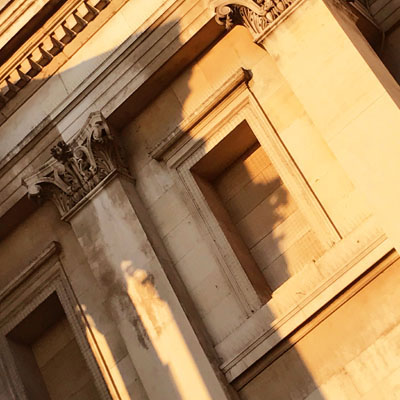
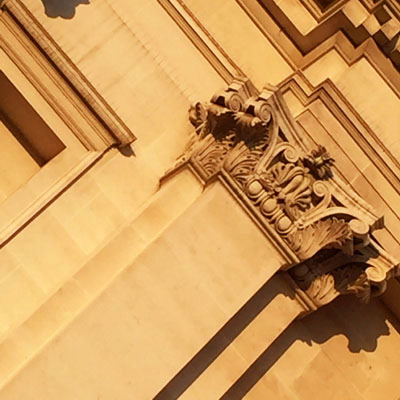










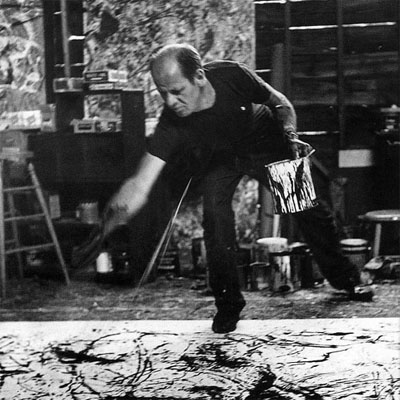
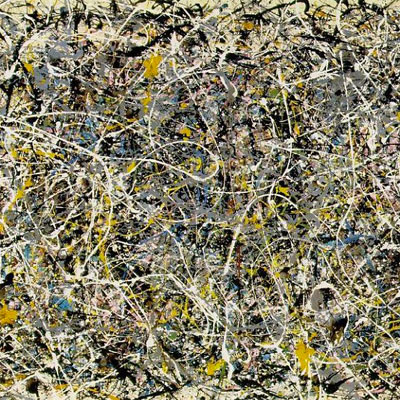


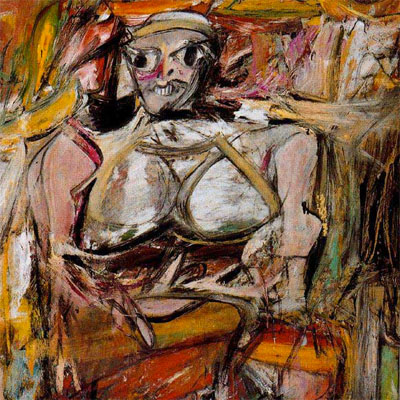
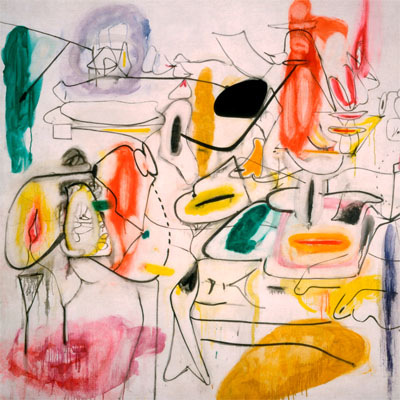
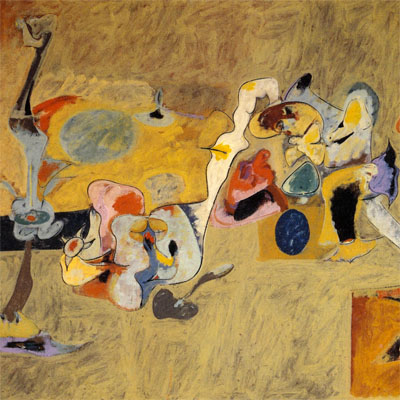

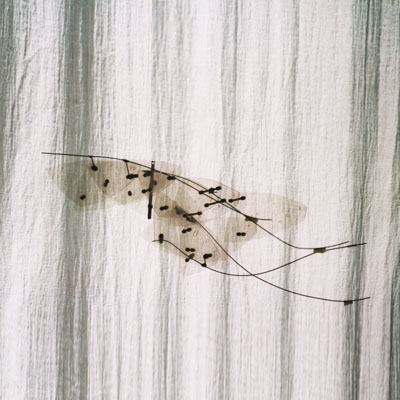
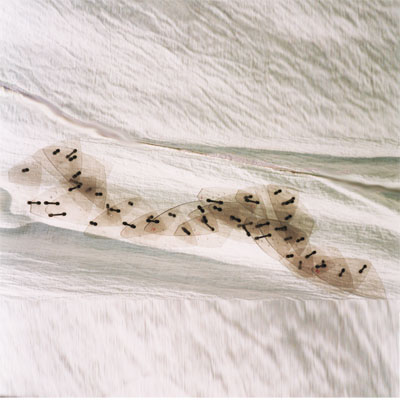
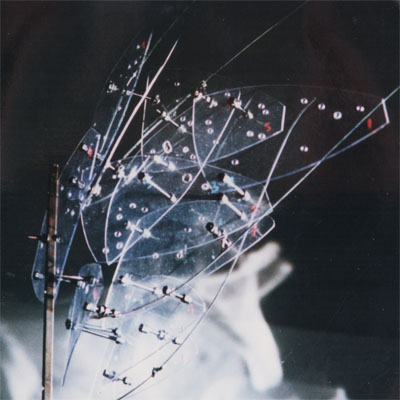
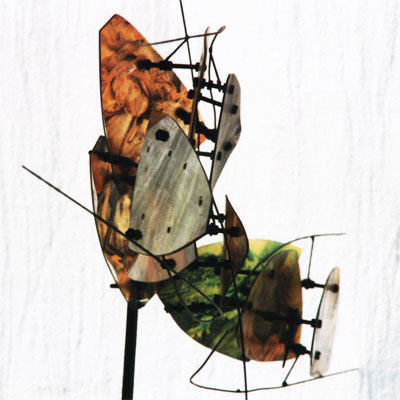
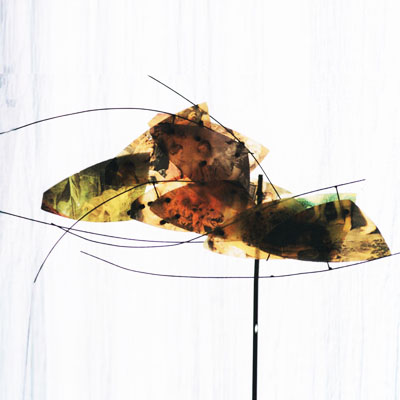

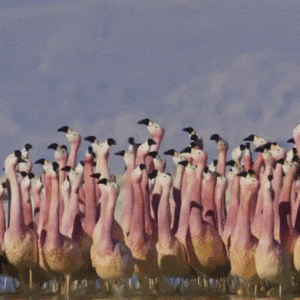
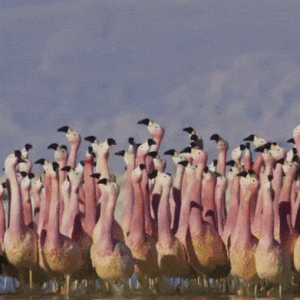
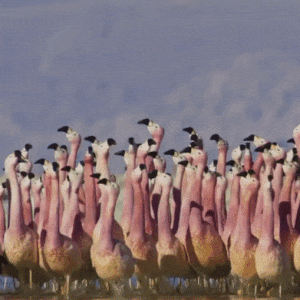
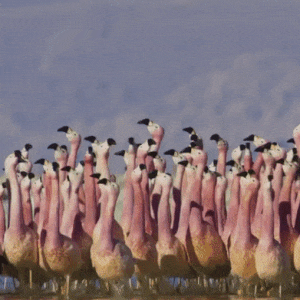

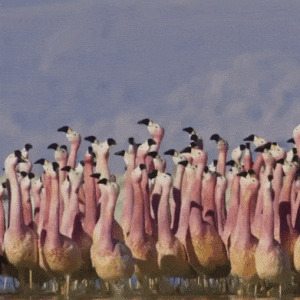
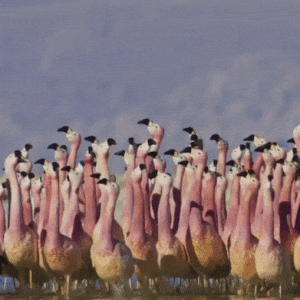
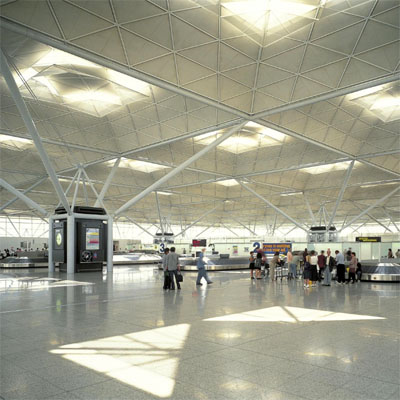
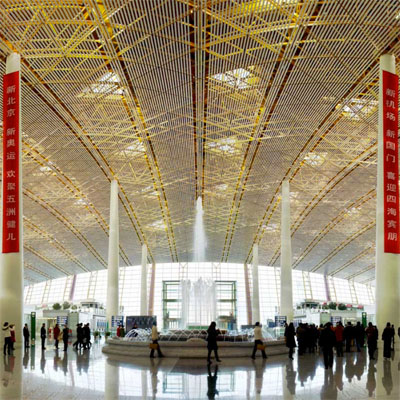
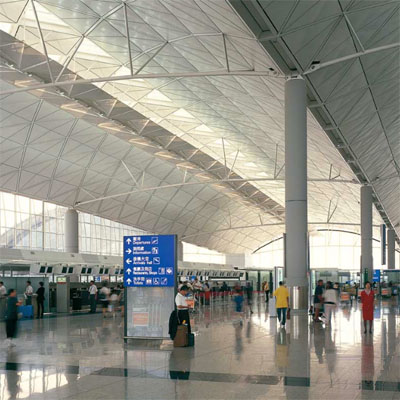
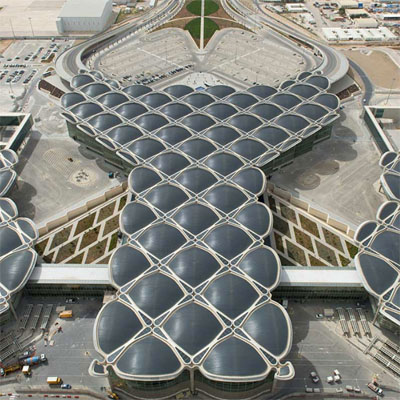
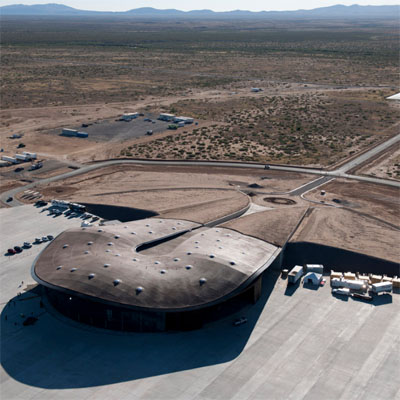
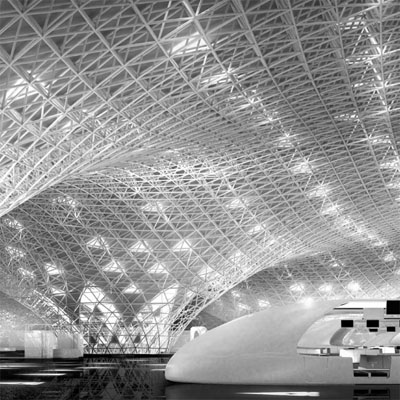
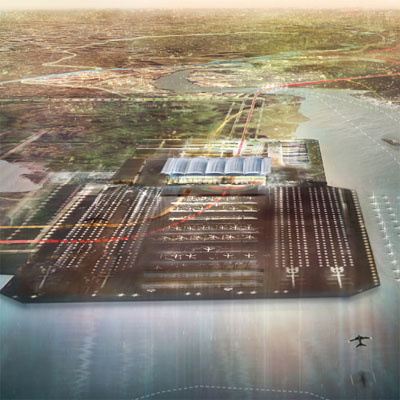

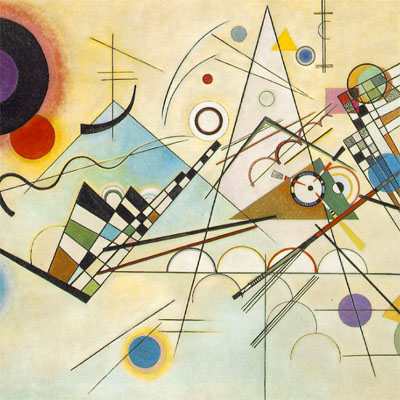
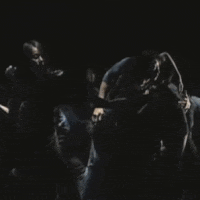

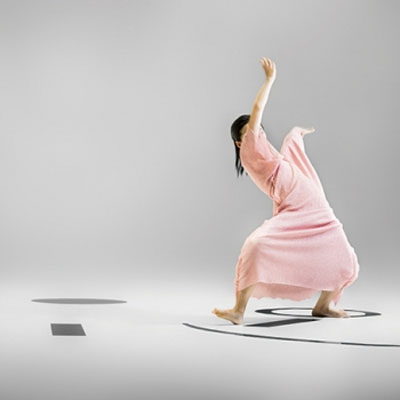
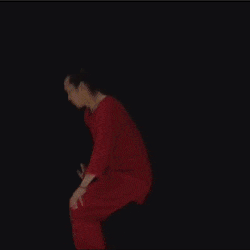
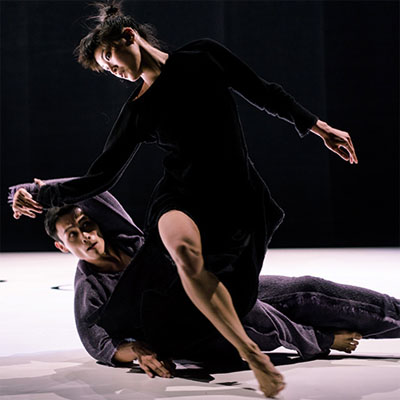


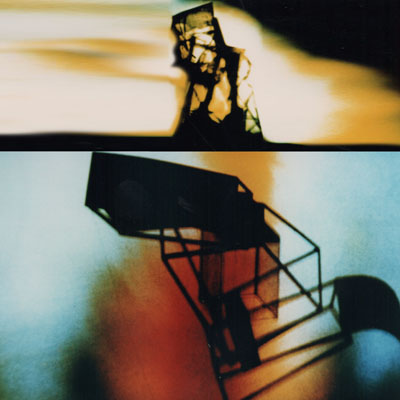
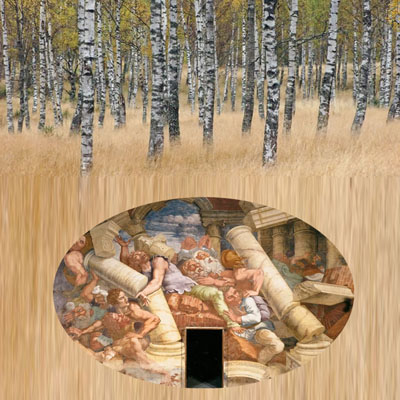
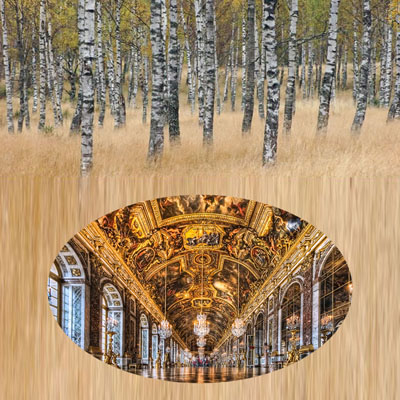
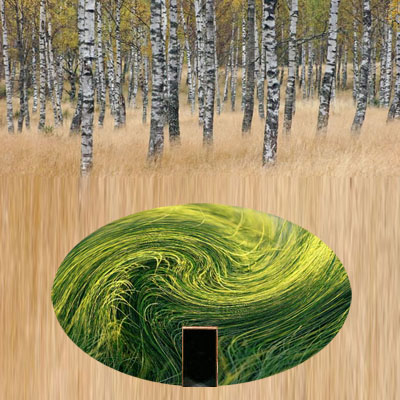
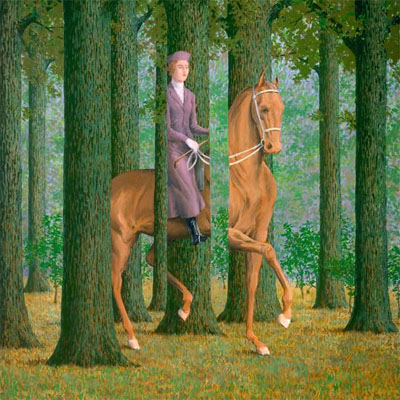
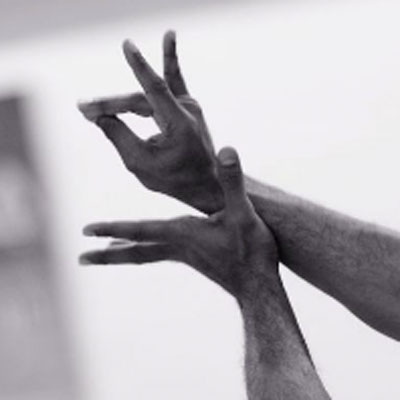
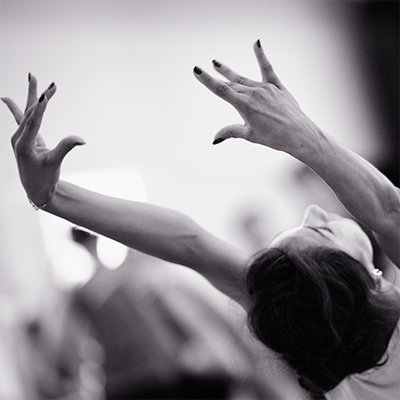
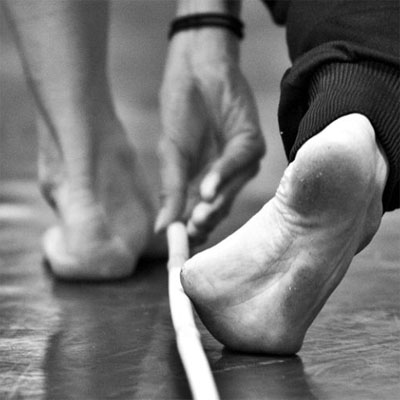
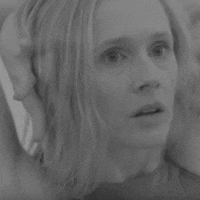
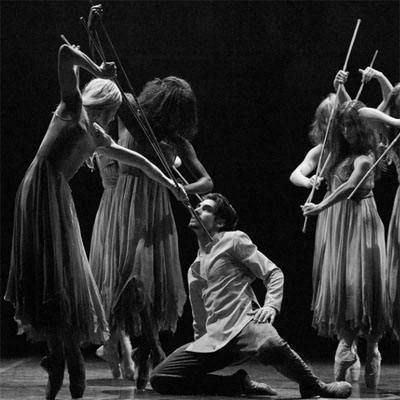
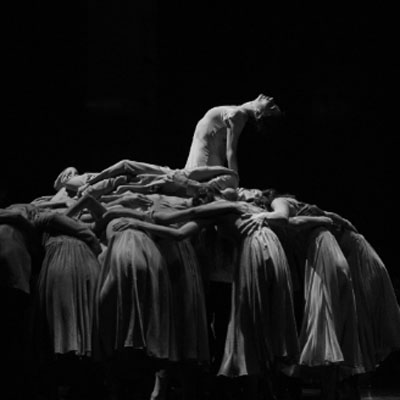
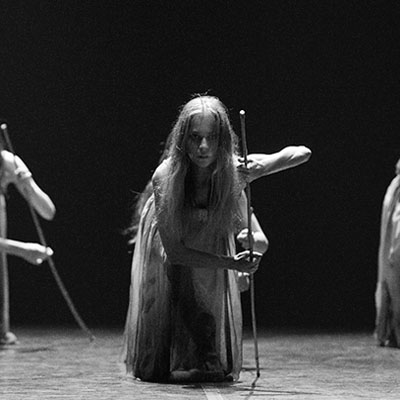
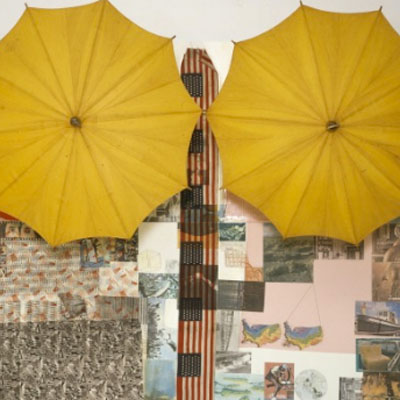
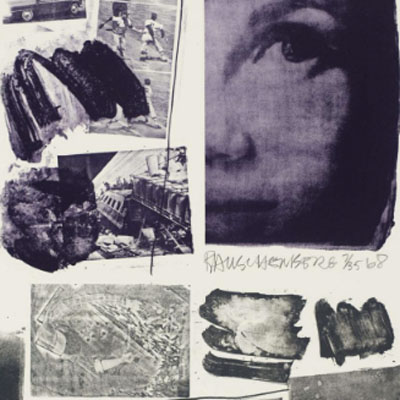
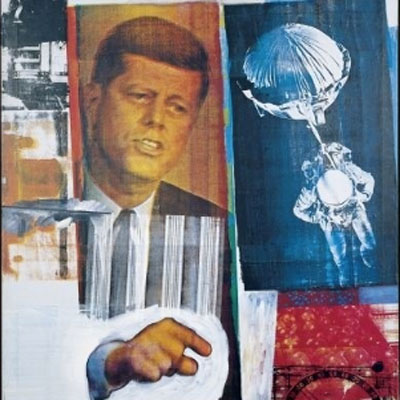
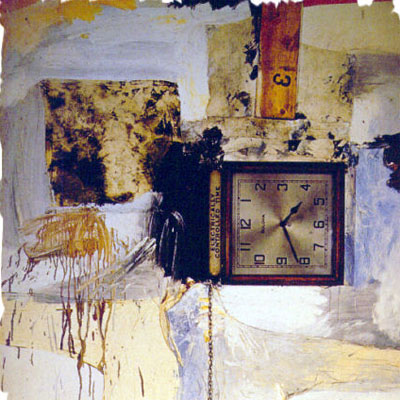
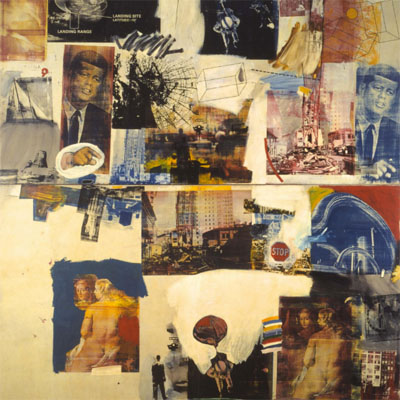
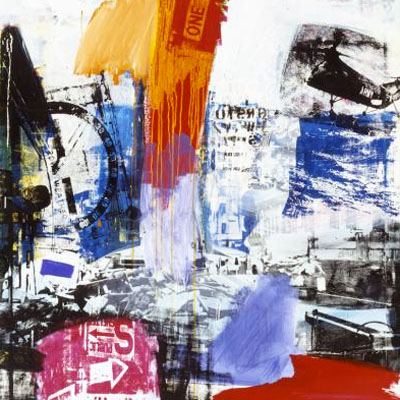
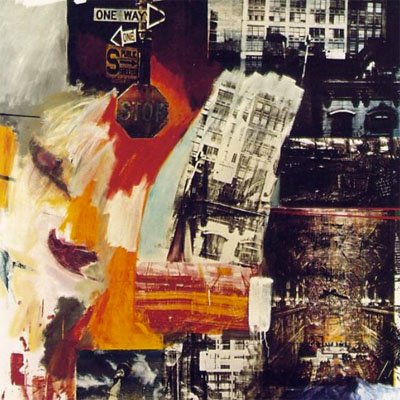
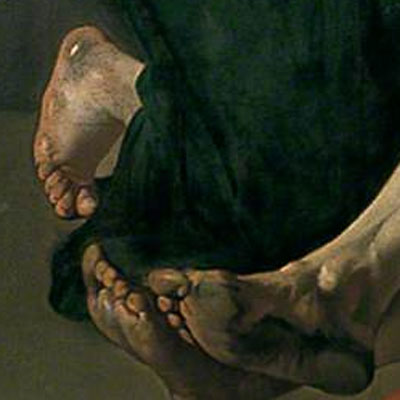
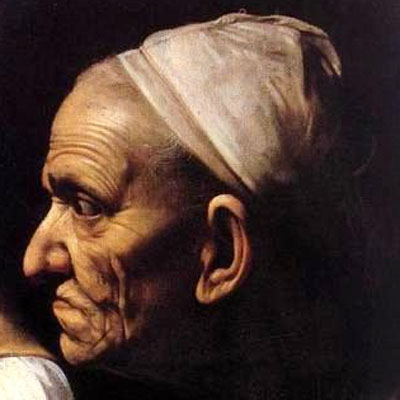
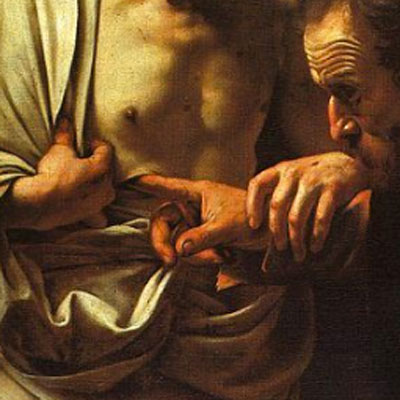

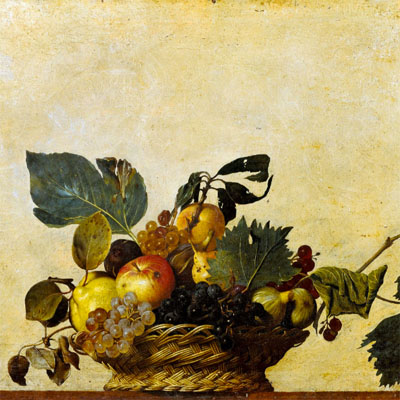

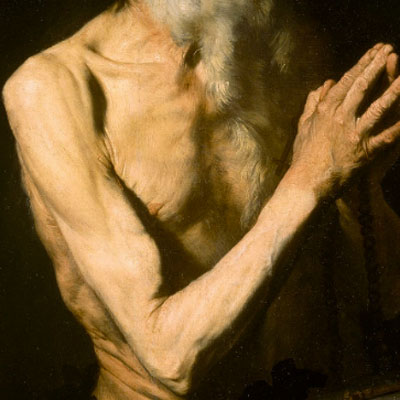
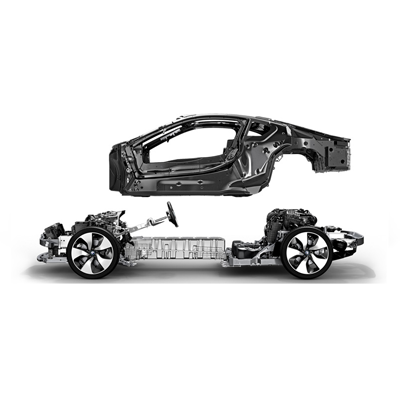
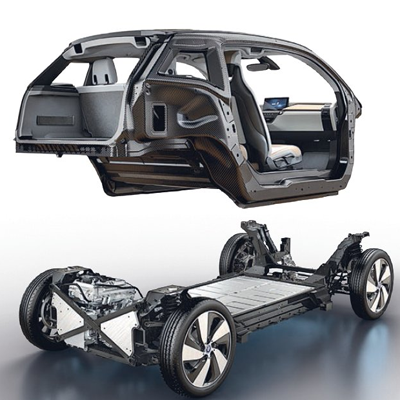
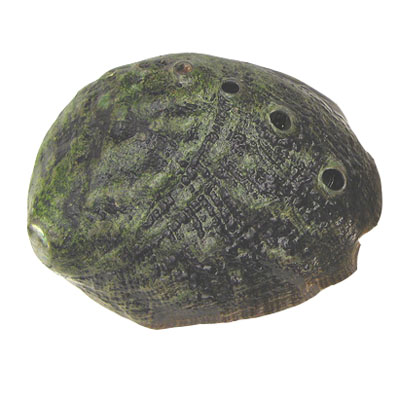
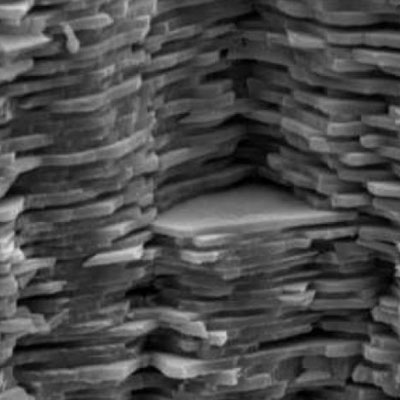
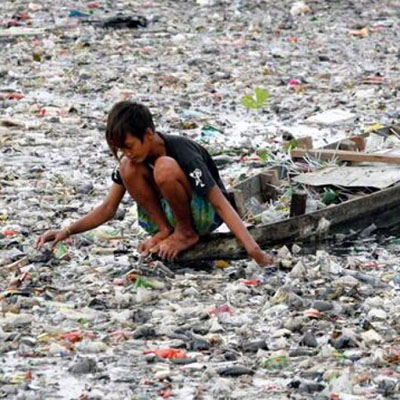





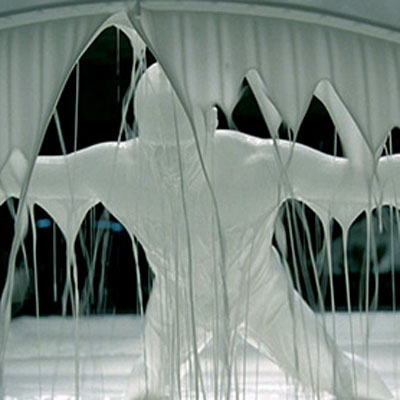
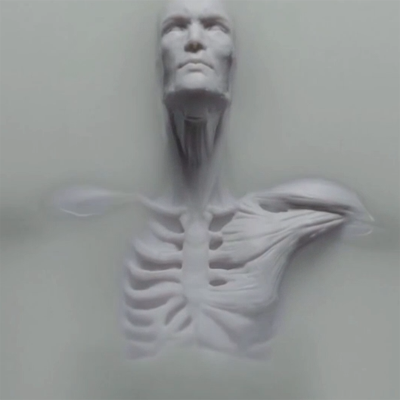
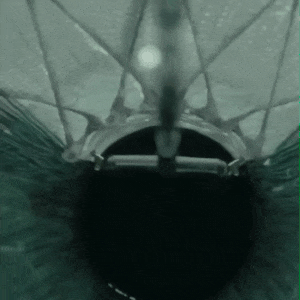
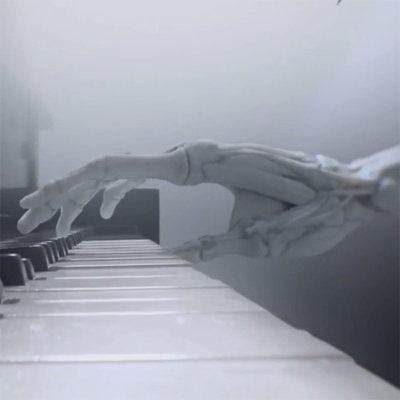
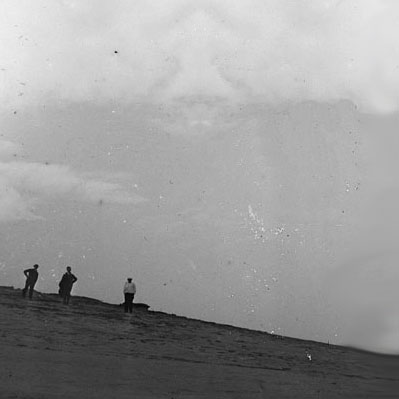
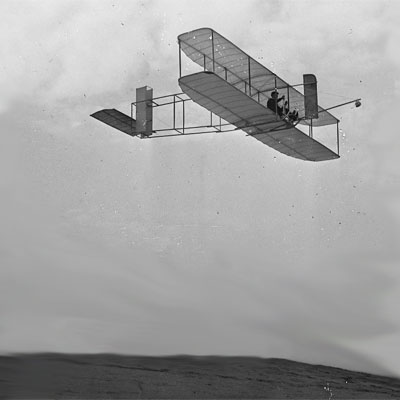
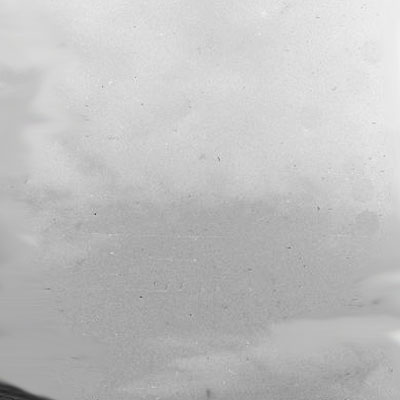

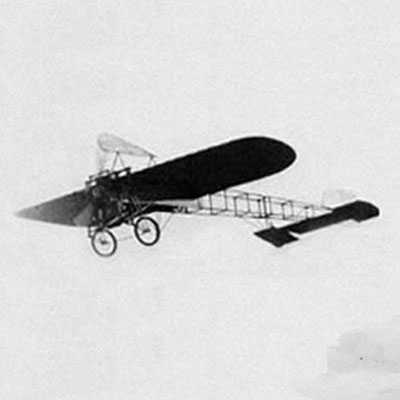
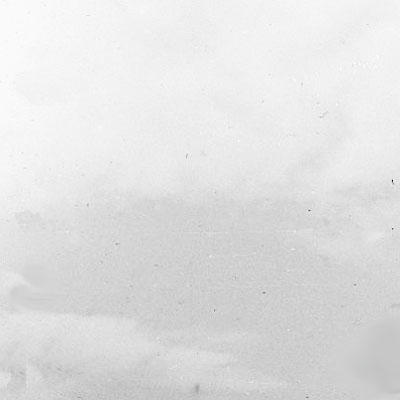
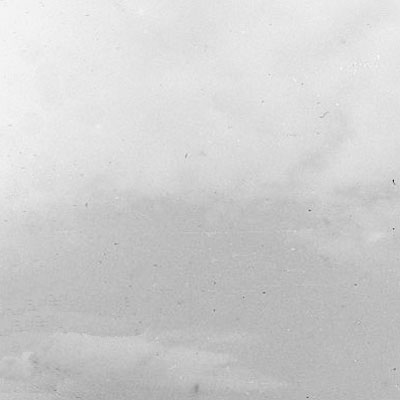
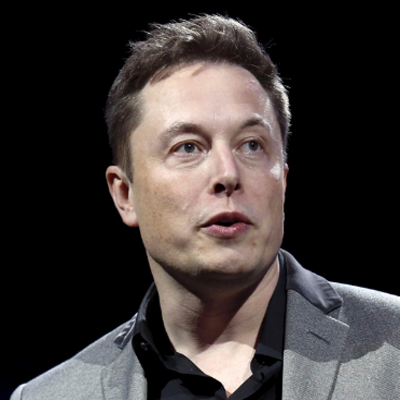
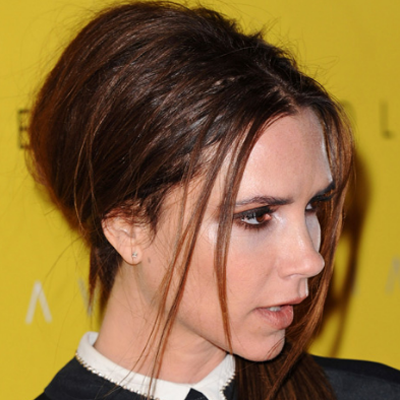


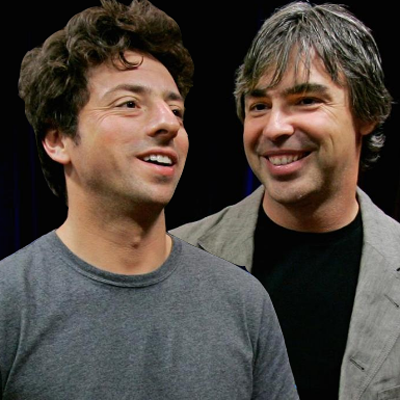
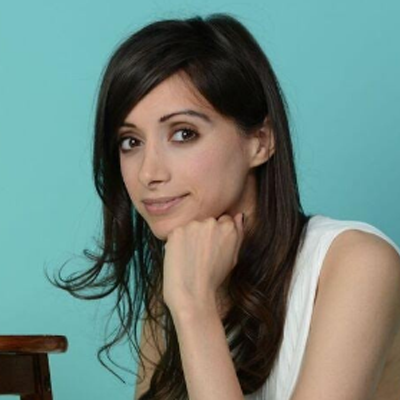
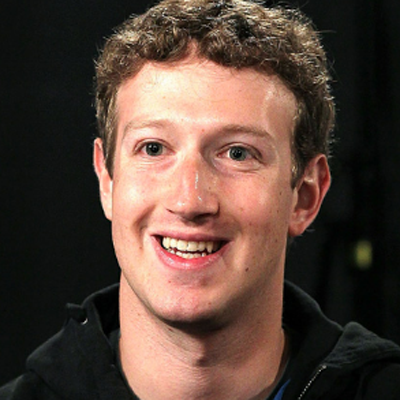

.gif)
.gif)
.gif)
.gif)

